|
This Japanese technique is written using two Chinese and one Japanese ideogram - with all three ideograms being routinely used in the Japanese written language - and two ideograms ('1' and '2') being used in the Chinese written language: 腰 - Japanese - Koshi (Chinese: yao1) = waist, hips and midsection 投 - Japanese - Na (Chinese: tou2) = throw, blend, redirect and reject げ - Japanese - Ge = down, low, depth and ground Interestingly, with regards the ideogram '腰' (Koshi) - both the Japanese and Chinese language dictionaries give an identical (and exact) physical location. Therefore, 'Koshi' represents the 'waist' (or the anatomical 'space' between the hips) situated toward the front of the body - whilst the back of the body corresponds 'Koshi' to the 'small of the back' or the 'lumbar' region. Although neither dictionary mentions the centre of gravity of the body - or the 'lower dantian' (both situated three-inches below the naval) it seems clear that such a 'special' area is implied. I think this assumption receives support as 'Koshi' is also used to refer to the 'kidney' area - perhaps slightly higher than the lumbar a 'cold' area significant within traditional Japanese and Chinese medicine. Although 腰 (yao1) is prevalent within Chinese martial arts (used to counter an opponent through penetrating their technique, blending with it and redirecting it) - 'Koshinage (腰投げ)' is a 'distinct' Japanese physical interpretation not found in China. When the Chinese government took Sō Dōshin (宗道臣) [1911-1980] to a Japanese Court in the early 1970s (an event covered in one of Donn F. Draeger's books on 'Modern Budo') - part of the evidence accepted by this Court that his style of 'Shorinji Kempo' ('Shaolin Gongfu') was NOT of Chinese origin - is that nearly all of its techniques include 'Koshinage' (the BBC chose to omit this Court verdict in its 1980 'Way of Warrior' series). Cooperation of this type is a Japanese cultural development - and is not found in China's traditional arts - even though the concept is present (and used in a different manner). However, I would note that the use of squat-kicks is found in Chinese arts and are used in exactly the same manner as this documentary suggests - although our Hakka style places a great deal on toughening the legs to take continuous impact (similar to Muay Thai fighters in Thailand) and keep effectively moving. The only Karate-Do style I have encountered that has squat-kicks is Goju Ryu.
0 Comments
Dear Tony The Chinese language description states that Seisan Kata derives from a 'Form' found within the 'Incense Shop Fist' (香店拳 - Xiang Dian Quan) Style. Xiangdian is a district in Fuzhou City, Fujian province. This is one of the thousands of lineages completely uneffected by the political changes in China - and which has been falsely recorded in the West as 'being wiped out', etc. This is the Chinese language encyclopaedia page: '香店拳源于清乾隆年间。南少林武僧智远为报香店人救命之恩,在此密传罗汉拳,隐名为“香店拳”。后经香店历代拳师吸取各派精华,形成了独特的香店拳,并流传于海内外。 [4] 香店拳是内外合一、硬气功兼练的技法拳种,分上、中、下三盘,善于短打近攻。武术套路有硬三战、三战等十多种套路,甚为独特。' 'Incense Shop Fist (香店拳 - Xiang Dian Quan) originated during the Qianlong period of the Qing Dynasty (1735-1796). The Southern Shaolin Temple Warrior-Monk named 'Zhiyuan' (智远) - in order to save the lives of the people living in the 'Xiangdian' area of Fuzhou City - secretly conveyed to them the techniques retained within the Shaolin gongfu Style known as Luohan Fist (罗汉拳 - Luo Han Quan). As he wanted to keep this interaction 'secret' - Zhiyuan referred to this Style as being called 'Xiangdian Fist' - giving the impression it was a local form of fighting already known by the people. As time progressed, however, Zhiyuan integrated (and absorbed) the essence of many other (different) gongfu arts and slowly the 'Xiangdian Fist' started to evolve - becoming very different from Luohan Fist. The effectiveness of this Style became famous and it was spread throughout China and abroad. Xiangdian Fist incorporates the unity of the 'internal' and 'external' (内外合一 - Nei Wai He Ye) and 'firm' qigong (硬气功 - Ying Qi Gong), etc. All this ability is manifested simultaneously in the mind and body of an advanced practitioner. The opponent is peppered with close-in and short-range (very powerful) techniques delivered to the continuously varying heights of high, middle and low. There are at least ten different and unique 'Forms' - including a 'firm' (hard) version of 'San Zhan' (三战) or 'Three Battles'.' A well-known Xiangdian Fist Master today is 'Yan Mengyong' (严孟永) [b. 1950] who started training with his uncle - Fang Ligui (房利贵) - in 1968. In November 1978, he was invited to participate in the First Wushu Observation and Performance Conference in Fujian Province with his master - Fang Ligui - and won an award. Since then, Master Yan Mengyong has taught Disciples from all over China - with his gongfu spreading to Hong Kong, Singapore, the United States - as well as many other places!
This Senior Citizen silenced the crowd when she raised her leg above her head! Silence turned into awe when she assumed a perfect ‘Golden Rooster Stands on Guard’ (金鸡独立 - Jin Ji Du Li)! Awe turned into spontaneous applause when she assumed a graceful ‘Single Side Horse’ (一字马 - Yi Zi Ma) Splits! This demonstration of Taijiquan was performed by the 77-year-old Jiang Xuezhen (蒋雪珍) in a park near the ‘White Horse River’ (白马河 - Bai Ma He) - the venue for the 2021 ‘Dragon Boat Race’ held in Fuzhou (Fujian province), Mainland China! This elderly lady was originally an ordinary worker in a garment factory – but is now enjoying her retirement. Not only has she practiced Taijiquan diligently to improve her health and strengthen her weak body - but she also made a name for herself in West Lake Public Park (西湖公园 - Xi Hu Gong Yuan) teaching Taijiquan to the common people! Since her graceful and powerful appearance at the Dragon Boat Festival - Jiang Xuezhen's dazzling martial arts skills have aroused the interest of many citizens! Some citizens cannot help but wonder – if this older lady was a professional gymnast before? Was Jiang Xuezhen involved in a lifetime of athletic training and development? The answer to all these questions is a resounding ‘NO’! In fact, Jiang Xuezhen was an ordinary worker employed in a garment factory before retiring - and she had NEVER received any such specialist education in this area before. The advanced pliability of her body (and its ‘ligaments’) stem from the time of her retiring from working in the garment industry. Jiang Xuezhen had to retire from working in the garment industry at the age of 45-year due to a physical issue (for which she successfully underwent recuperative surgery). Jiang Xuezhen admits that this was a very confusing time for her both emotionally and psychologically! That is until one day, when she was walking to the West Lake Park (taking exercise), this lady encountered a group of people practicing Taijiquan! At that exact moment - EVERY movement of the Yang Style (the Beijing 24-Step Short-Form) she saw resonated with her mind and body - instantly attracting her attention! When Jiang Xuezhen returned home, she immediately made arrangements to purchase a Taijiquan instructional VCD – which she used to learn Taijiquan through watching carefully and copying the exercises! The next step involved Jiang Xuezhen seeking-out Taijiquan instructors who then corrected and adjusted her ‘Form’ whilst discussing explaining the history and purpose of each sequence - making the revitalising movements much more powerful and effective! Although it took a long time of committed and regular practice, the regular performance of the Taijiquan movements and sequences finally start to transform the natural state and condition of her muscles, joint, bones, ligaments and tendons. At the same time her overall health improved as her inner organs began to strengthen. These changes were so profound that her partner also began to regularly practice Taijiquan! Together, they founded the ‘West Lake Park Taijiquan Practice Group’ - which at the time of writing has at least one-hundred members! When giving a recent interview to reporters, Jiang Xuezhen stated: “It is said that with every inch the ligaments stretch – the lifespan is extended by ten years! This is why I stretch my legs every day!” Jiang Xuezhen went on to explain that when she first tried to lift her legs all those years ago – her ligaments were tense there was very little movement with pain! Jiang Xuezhen trained diligently between the ages of 45-60-years old, and then she found that one day ALL the tension in her body completely disappeared and she was able to drop down into the side-splits position – and stand with one leg held-up directly into the air! This is why Jiang Xuezhen is now able to assume the ‘Golden Rooster Stands on Guard’ and ‘Single Side Horse’ Splits with ease! After demonstrating her extraordinary Taijiquan skills, Jiang Xuezhen advises: “Concentrate upon an activity and pursue its perfection with diligence!” This is sound advice, as apart from being able to demonstrate her mastery of Taijiquan – Jiang Xuezhen is also a painter! Jiang Xuezhen explained that she liked to draw since a child - and has always kept one or two drawings of the Four Treasures in the study room at home - after retirement. When she was about 65-years old, Jiang Xuezhen accompanied her partner in the study of flower and bird painting in a university designed to cater to the needs of the elderly. After two years of meticulous flower and bird painting - Jiang Xuezhen turned to landscape painting. The landscape paintings provided by Jiang Xuezhen are truly inspiring – with the background and fore-ground scenery featuring lakes and mountains contrasting perfectly! The art of Jiang Xuezhen generates a unique beauty which is enhanced by an atmosphere which is experienced by the observer as being vast and hazy! Jiang Xuezhen describes herself as a very serious person. When she learns one thing, she spends all her energy on that single activity. In order to learn landscape painting well, she would only go out daily to practice Taijiquan, but rarely for any other reason. She would often spend a week focusing upon a single picture! Then, in order to match the landscape paintings with the beautiful ideograms that comprised the inscriptions, she also spent a year studying different Chinese calligraphy styles such as seal script, official script, and regular script. "If the font is not good-looking, and the inscription is not well-written, it cannot be regarded as a complete and perfect painting." Jiang Xuezhen explained. This is her true character. It has been nearly 30 years since Jiang Xuezhen retired – yet she has retained the eagerness to learn and perfect everything she turns her hand to! Today, in addition to Taijiquan and landscape painting, Jiang Xuezhen can also perform ballroom dancing! As if all these activities are not enough – Jiang Xuezhen also practices Shaolin martial arts! With her extensive knowledge base and engaging personality, Jiang Xuezhen has become something of an inspiration to the surrounding population – a cultural icon for modern China! [Source: Strait Metropolis Daily] Chinese Language Source: 花30年练太极,福州七旬老太一字马惊艳全场
高抬腿过头顶,一个爽快的金鸡独立瞬间赢得现场朋友的喝彩,随即她又在地上来了一个漂亮又利索的一字马,把节目推向了高潮……不久前,在福州白马河公园举行的端午节活动现场,一位老太的表演让不少市民自愧不如。这位老太就是福州77岁的蒋雪珍,原是服装厂工人的她,在退休后寻找到自我,不仅苦练太极拳改善了虚弱的身体,还在西湖公园“打”出了名堂,将太极拳教授给了更多的人。 60余岁练就金鸡独立、一字马动作 自从在端午节活动中的精彩亮相后,蒋雪珍的花式炫技引起了不少市民的兴趣,有的市民不禁疑惑问,这位老太太以前是不是体操运动员?其实,蒋雪珍退休前是一名服装厂的工人,之前也没有从事过这方面的练习,有着柔软的韧带的起因还要从她退休时说起。 45岁时的蒋雪珍因为身体原因动了手术后,便从原来就职的服装厂退休了。而突然的退休让将蒋雪珍手足无措,每日不知道该做些什么,陷入了迷茫。直到有一日,她散步到西湖公园时,看到了不少人在练太极拳,一招一式瞬间吸引了她的注意。抱着锻炼身体的想法,她购买了太极拳教学碟片,通过不断地的模仿练习学会了太极拳,在与太极拳老师的交流切磋中更精进了太极拳的动作。而在长期的锻炼后,蒋雪珍感到身体逐渐舒爽了不少,更是动员她的爱人一起到在西湖公园中练习太极拳。在30年间,不少市民自发向她学习太极拳,为此,她和爱人还成立了一个西湖如春太极辅助站,学员最多的时候达到了近百人。 “都说筋长一寸,寿延十年,每次运动后,我都拉拉腿。”蒋雪珍告诉记者,原先的她腿抬高一点腿都觉得筋绷得崩的紧,但在多年的锻炼中,她不断尝试拉伸韧带,到了60岁左右,才能可以做出金鸡独立、一字马的动作。 “专心做一件事,并要把它这件事做精” 除了一字马、金鸡独立、太极拳外,蒋雪珍还是一个画家。蒋雪珍说,她从小就喜欢画画,退休后在家里也时常备上文房四宝画上一两副。于是在她65岁左右,她的爱人便带她来到了老年大学里学习花鸟画,在两年的工笔花鸟设色学习入门后,蒋雪珍又转入山水画的学习中。在蒋雪珍提供的山水画作品中,湖和山相映衬的秀丽景色,在苍茫朦胧的氛围中有着独特的美感。 蒋雪珍自喻是个较真的人,学习一件事时,便将所以精力花在一件事上,为了学好山水画,她除了每日的太极拳练功外,便少有外出,常常花上一周的时间认真绘一幅画。而后为了给山水画配以好看的题款,她还用了一年的时间去学习了篆书、隶书、楷书等书体。“如果字体不好看,题款写不好就不能算是一幅完整、好看的画。”蒋雪珍说。 正是较真的性格,蒋奶奶在退休后的近30年间,不断地的保持好学的心,并将每件事做到精,如今的她除了太极拳、山水画外,她还会交际舞、少林武术,成了周围人口中“技能点满满”的潮人。 【来源:海峡都市报】 From July 27th to August 1st, 2016, at the invitation of the Naha City Cultural Association of Japan and the Okinawa (International) Goju Ryu Karate-Do Federation, a group of Buddhist monks from the Putian (莆田) Chan Wu (禅武) - or ‘Meditative Martial Arts’ - Southern Shaolin Temple visited Japan to give a demonstration of their ancient martial arts skills! This was part of a mutual exchange programme which promotes music, dance and the arts - to build friendship and closer ties between the two countries. During the visit, the Putian Southern Shaolin Temple group first went to the "Okinawa Traditional Ancient Martial Arts Preservation Association" to visit the President Nakamoto Masabu (仲本政傅). Nakamoto Masabu visited Fujian in 1988 to study under ‘Chen Yijiu’ (陈依九) - the Fourth Generation Master of the ‘Ground Method Fist’ (地术拳 - Di Shu Quan) - also termed ‘Dog Fist’ (狗拳 - Gou Quan)! In 1995, he led a Japanese team that participated in the China (Putian) Southern Shaolin International Martial Arts Competition. Afterwards, the Putian Southern Shaolin group next visited the Okinawa Prefectural Budokan to participate in the "Okinawa (International) Goju Ryu Karate-Do Federation World Budo Festival" which is held every four years. The Putian Southern Shaolin Temple group showed their skills at the opening ceremony of the Martial Arts Conference. On display was the Shaolin ‘Stick’ (棍 - Gun), Closed-Fist Arts (拳术 - Quan Shu), Broad Sword (刀 - Dao), Long Swords (剑 - Jian) and all kinds of ancient military weapons! There was also various other performances of endurance, strength and power, etc, that impressed the crowd and attracted warm-hearted applause! The monks of the Putian Southern Shaolin Temple were praised for their calm state of mind, technical expertise and fierceness during combat! The Head Monk of the Putian Southern Shaolin Temple - ‘Kong Xing’ (空性) said that ‘Okinawan Goju Ryu is a Southern style of Chinese martial arts defined as being a combination of the “Southern Boat and Northern Horse”, and which developed through the White Crane Gate of the Southern Shaolin Temple!’ The name of the style derives from a once secret book associated with the White Crane Gate entitled the ‘Martial Preparation Records’ (武备志 - Wu Bei Zhi) - where this text states ‘The methodology involves the continuous interchange of hard and soft whilst the body absorbs (like swallowing) and emits (like spitting)!’ The Putian Southern Shaolin Temple has a special relationship with the Okinawan martial arts community and is very happy to facilitate cultural exchanges between China and Japan! The Head Monk went on to explain that a Special Research Department is active at his temple which assists groups and individuals to visit and stay at the temple to study Ch’an meditation and ‘Southern Fist’ (南拳 - Nan Quan) - whilst an Administrative Section carries-out historical and cultural research involving martial arts and associative subjects. Together, the Putian Southern Shaolin Temple and Naha City Cultural Association share a common (non-political), martial arts history that can only benefit the people of China and Japan! This friendship is facilitated by the Okinawa (International) Goju Ryu Karate-Do Federation, which continuously offers its support, guidance and encouragement! The Putian Southern Shaolin Temple adheres to the spiritual and physical teachings as taught by the ancient Indian Buddhist monk – the Great Master Bodhidharma (达摩 - Da Mo)! Through hours of sitting in Ch’an meditation he calmed, stilled and expanded his mind (eradicating greed, hatred and delusion and cultivated loving kindness, compassion and wisdom), whilst through martial arts practice of various kinds, he eradicated illnesses, healed wounds and extended his longevity! By emulating this practice, we can live healthy and wise lives and benefit the entire world! This is why the Head Monk - Kong Xing - further stated the Southern Shaolin Temple invites friends from all over the world and welcome everyone who comes to the Putian Southern Shaolin Temple to experience the charm of its meditative and martial Buddhist culture! At the same time, Kong Xing invited friends from all over the world to jointly promote the spirit of peace, compassion and altruism, and contribute toward the happiness and stability of human society by cultivating harmony between human beings and nature! It is understood that also attending this conference - in addition to the staff of the Karate-Do Headquarters in Japan – was more than 1,500 participants from 52 national Karate-Do organisations, including the United States, Russia, the United Kingdom, Spain, and Australia! The Head Monk of the Putian Southern Shaolin Temple – Kong Xing – then presented special calligraphy to his Japanese hosts! The monks from the Putian Southern Shaolin Temple performed various ‘Southern Fist’ (南拳 - Nan Quan) routines during their exchange visit in Japan. Source: Meizhou Daily Chinese Language Source: 冲绳刚柔流空手道源自南少林拳白鹤门
来源:湄洲日报 作者: 时间:2016-08-05 08:22:36 本报讯7月27日至8月1日,应日本那霸市文化协会和冲绳(国际)刚柔流空手道联盟的邀请,莆田南少林寺禅武团前往日本进行武术、音乐、艺术等方面的交流,共同推动两地的文化交流与友好往来。 访问期间,莆田南少林寺禅武团首先前往“冲绳传统古武道保存会”,拜访会长仲本政傅。仲本政傅曾于1988年来福建向地术拳第四代传人陈依九学艺,1995年带队前来参加中国(莆田)南少林国际武术大赛。之后,禅武团一行前往冲绳县立武道馆,参加四年一届的“冲绳(国际)刚柔流空手道联盟世界武道祭”演武大会。 南少林寺禅武团在演武大会开幕式上大展身手,少林棍、拳术、刀剑兵器类等表演,引得现场一阵阵热烈的掌声,大家直夸南少林寺武僧们武术功底扎实,打得虎虎生威。 莆田南少林寺方丈空性说,冲绳刚柔流空手道系中国“南舟北马”中的南派功夫,源自南少林拳白鹤门,其流派的名称来源于白鹤门流传秘书《武备志》中“法刚柔吞吐,身随时应变”。此 次民间武术交流活动,对加强莆田南少林寺与那霸市文化协会、冲绳国际刚柔流空手道联盟的友好关系,增进文化交流与武术互鉴、深化合作具有积极意义。 南少林寺一贯秉承达摩大师的宗风,以武术强健体魄,以禅法静心明智,以慈悲利益世间,进而成就自他圆满的智慧人生。 空性说,南少林寺向世界各国的朋友发出邀请,欢迎大家来莆田南少林寺,体验南少林禅武文化的魅力,感受佛教的人文艺术。同时,还邀请世界各国的朋友共同弘扬和平、慈悲、利他的精神,为人类社会的幸福安定、人类与自然的和谐奉献一份力量。 据了解,此次大会,除了日本刚柔流空手道本部人员外,有来自美国、俄罗斯、英国、西班牙、澳大利亚等52个国家的空手道组织共1500余人参加。 南少林寺方丈空性赠送书法给日本友人。 莆田南少林寺武僧在日本交流期间表演各种南拳。原标题:冲绳刚柔流空手道源自南少林拳白鹤门 Mr Mekaru Kenichi (铭苅拳一) (b. 1947) Mainland China's First 'Official' Karate-Do Teacher! (15.1.2012)8/23/2022 Translator's Note: Master Mekaru Kenichi was born in '旧大里' (Jiu Da Li) Village in Okinawa during 1947 (that is the 'Old Big and Wide' Village) - as the island was still recovering from the cataclysmic (1945) Battle of Okinawa! His surname '铭苅' (Mekaru) appears to be a District of Northeast Naha City (perhaps named after a tortoiseshell) - whilst his first names of '拳一' (Kenichi) possess a definite martial connotation meaning a 'Single Fist' or a 'Fist that Unifies', etc! Times were hard when he was young and life was difficult - but Mekaru Kenichi and his clan were held together by their Karate-Do mind and body discipline - knowing full well that its inner structure was historically from China! During the early days of his life, his biography relates how even as a young child he was holding the 'Horse Stance' and participating in general 'Tang Hand' training with no particular 'name' or 'style' association (a typical situation amongst many traditionally minded Okinawans at the time)! In 1958, when he was 11 years old, his family emigrated to the Sao Paulo area of Brazil to join the already substantial Japanese and Okinawan population already living their and doing well with lots of open space to build and plenty of work opportunities! During 1977, when Mekaru Kenichi was 30 years old, he met Mr. Kakazu Yoshimasa - who had come to Brazil to participate in an 'Open' fighting competition! Upon his return to Okinawa - Mekaru Kenichi followed him and became his martial arts disciple! When returning to Mr. Kakazu Yoshimasa's Dojo in Naha City, he was tasked with mastering the 'Kobayashi Ryu' (小林流) - style of Okinawan Karate-Do - a branch of the 'Shorin Ryu' (少林流) fighting style - which uses the Chinese ideograms that read 'Shaolin Lineage'. - as there is a belief that this style of Okinawan Karate-Do was originally linked directly to the Shaolin Temple tradition of China. Kobayashi Ryu was founded by Chibana Chōshin (知花朝信) [1885-1969]. His family practiced the 'Chinese Hand (唐手 - Tang Shou) - and refused the Japanese order to change the name to 'Empty Hand' (空手 - Kong Shou) for decades! Master Mekaru Kenichi became a very great Master of the Kobayashi Ryu style and was renowned for travelling the world and relentlessly teaching anyone who wanted to learned genuine, Chinese-based Okinawan Karate-Do! This led to him eventually entering China and working very hard to introduce the modern Chinese people to a martial art that belonged to them - but which had been transmitted to another culture hundreds of years ago! Master Mekura Kenichi dedicated 25 years of life to China before retiring and leaving a place in 2013 (aged 66) he had called 'home' for quarter of a century! The record books now show that Mekura Kenichi was the first person to introduce an Okinawan Karate-Do style (Kobayashi Ryu) into an independent and thriving Mainland China during 1988! ACW (23.8.2022) Master Mekura Kenichi Demonstrates 'Basic Kata Number One'! Mr Mekaru Kenichi first visited China in 1988 – where he is well-known for performing what would become known as his inaugural Karate-Do cultural exchange performance at the Shanghai Wushu Academy! The reaction from the thousands in attendance at the time was very appreciative and supportive! Since then, people from all walks of life in Shanghai became very interested in learning the martial art of Karate-Do, and this positive reaction gave him the idea of developing the teaching of Karate-Do in Shanghai! In 1990, Mr Mekaru Kenichi was introduced by the Brazilian President in a letter and recommended by the Japanese Consulate in Shanghai. With the help of Mr. Zhu Rongji (朱镕基) the Mayor of Shanghai at that time - he was contacted by the Foreign Affairs Office of the Shanghai Municipal Commission for Sports - and entirely at his own expense, established China's first officially recognised Karate-Do training class held at the Shanghai Physical Education Training Hall. At that time, a large number of willing practitioners flocked in an endless stream to the classes, and the registration was extraordinarily high! To help with the training process, the Japanese government provided 300 Karate-Do training suits (termed ‘gi’) for free - for the newcomers to use! In Japan, karate is taught as part of the School Physical Education Curriculum! Therefore, Mr Mekaru Kenichi wanted to establish Karate-Do as a sport in China’s Primary and Secondary Schools and Universities in China, so as to popularise this martial art amongst the youth! In 1992, he taught for free and borrowed 100 further sets of Japanese Karate-Do uniforms for which he distributed for free. He founded the Fudan University Karate Association and opened the first Karate-Do training class to be held in a Chinese university and was hired as the Honorary President and Chief Instructor of the Association (which provided him with a small room to live, three meals a day and a small stipend). From this firm foundation, he opened a Karate-Do training course and served as the Head Coach for the Shanghai Metallurgical College. The following year, he aimed at establishing Karate-Do classes throughout the whole country yet again! This time he was successful, and he managed to establish fully functioning Dojos in Chengdu, Kunming, Xi'an, Shenyang, Nanjing, Hangzhou, Qingdao, Guangzhou, Hong Kong and other major cities – attracting the huge number of 80,000 ethnic Chinese students! Mr Mekaru Kenichi was appointed by the Okinawa Fist Study Association of Japan to promote traditional Karate-Do all over the world! He has taught in major cities in dozens of countries, including the United States, Canada, Mexico, Brazil, Paraguay, Argentina, Colombia, Peru, France, Spain, Portugal, and Italy. After 20 years, the number of students around the world has reached 35,000! He has stated, however, that as China is the birthplace of Karate-Do – China remains the country with the most potential for development. In order to spread and develop Karate-Do in China, he would rather give up the materially superior conditions of other countries, relocate to a remote part of China for meditative study, and invest whatever money he could raise and donate it to the Chinese people - to be used for the promotion of Karate-Do! After years of hard work by Mr Mekaru Kenichi , the regular practice of Karate-Do has developed rapidly throughout China – a process which has proven especially strong in Shanghai. Today, dozens of colleges and universities, including Fudan University, Shanghai International Studies University, Shanghai Institute of Foreign Trade, Donghua University, Nanjing University of Science and Technology, and Peking University, have all established regular Karate-Do associations and offer Karate-Do courses (including medicine and weaponry). At the same time, many fitness clubs have also launched Karate-Do as a form of fitness exercise, training tens of thousands of students! On April 25th, 1999, China's first official Karate-Do body – the ‘Shanghai Wushu Association Karate Committee’ - was established through the authority of the World Karate-Do Federation! Through the introduction of Mr. Wang Zhaoji (王肇基) - the Director of the Karate-Do Committee of the Shanghai Wushu Association - Mr Mekaru Ginkari was hired as the first Consultant Head Coach. This appointment was confirmed at the inauguration ceremony, where enthusiastic Karate-Do students were called upon to hold a demonstration and competition! Mr Shimizu Seno - the Deputy Consul General of the Japanese Consulate in Shanghai - also came to the Shanghai Wushu Academy to watch the inauguration ceremony! At the invitation of Mr Mekaru Kenichi important members of the World Karate Federation and All Japan Karate Federation attended the inauguration ceremony – including director Arakawa Tong and director Hasumi Keiichi! These Karate-Do experts personally guided Chinese students in their Karate-Do practice – and helped explain the competition rules as established by the World Karate Federation! Everyone who attended, regardless of rank, ethnicity or origination, all chose to support China by joining the Karate-Do Committee of the Shanghai Wushu Association! During May 2000, following negotiations between Mr Mekaru Kenichi and the Japan Kyokushinkaikan - the first Sino-Japanese karate exchange competition (for college and high school students) was held (including full-contact sparring, Kata and weapons demonstrations), with many more high-spirited Sino-Japanese exchange competitions being held since then! During February 2001, Mr Mekaru Kenichi invited the All-Japan Karate Women's Champion to Shanghai to participate in the exchange competition with Shanghai karate students – to offer advice regarding practice methods, Kata performances and actual combat (self-defence) experience! Chinese Language Source: 铭苅拳一介绍
铭苅拳一介绍2012年01月15日 13:46:07 铭苅拳一先生于1988年第一次来到中国,在上海武术院进行了第一次空手道交流表演,当时反映极为强烈。鉴于上海各界人士对空手道十分感兴趣,在上海发展空手道的想法产生于他的脑海之中。 1990年,铭苅先生经巴西总统致信介绍及日本驻沪领事馆的推荐,在当时上海市市长朱镕基先生帮助下,由上海市体委外事处联络,在上海体育宫自费创办了中国第一个公认的空手道训练班。当时大批学习者络绎不绝,报名极为踊跃,全部免费借用了从日本带来的三百套拳士会空手道道服。 在日本,空手道是作为学校体育教育课程的。由此铭苅先生想在中国各中小学及大学内开展空手道运动,在学生中进行普及。1992年,他义务免费授课,并免费借用一百套日本空手道道服,创建了复旦大学空手道协会及开设了中国高校的第一个空手道训练班,并受聘为协会荣誉会长兼总指导;同时在上海冶金高等专科学校开设了训练班并担任总教练。 次年,他又把目标指向了全国,先后在成都、昆明、西安、沈阳、南京、杭州、青岛、广州、香港等各大城市办班传授武艺,学生总数8万人次以上。 铭苅先生曾受日本冲绳拳士会委派,到世界各国推广空手道。在美国、加拿大、墨西哥、巴西、巴拉圭、阿根廷、哥伦比亚、秘鲁、法国、西班牙、葡萄牙、意大利等数十个国家的大城市都任教过,历经20年,学生达3万5千人次。但还是发现中国是最具有潜力可发展的国家。为了在中国传播和发展空手道,他宁愿放弃其他国家的优越条件,来到中国进行考察,投入许多资金在中国空手道事业的开展推广方面,为了能使中国的空手道运动更好、更顺利地发展。 经过铭苅先生多年的努力,空手道事业在中国发展蒸蒸日上,特别是在上海。如今包括复旦大学、上海外国语大学、上海对外贸易学院、东华大学、南京理工大学、北京大学等数十所高校都成立了空手道协会,开设了空手道课程。同时许多健身俱乐部也已开展此运动,培训学员数万名。 1999年4月25日,经世界空手道连盟认可,中国第一个空手道委员会——上海市武术协会空手道委员会成立。在上海市武协空手道委员会主任王肇基先生的介绍下,铭苅先生被聘为首任顾问总教练,并在成立仪式上召集空手道学员举办了表演比赛。日本驻沪领事馆副总领事清水濑野先生也来到上海武术院观看了这次成立仪式。在铭苅先生的盛邀下,世界空手道连盟和全日本空手道连盟的最高干部局长荒川通和理事莲见圭一亲临上海庆祝空手道委员会的成立,观看、指导中国学生的表演比赛,并对世界空手道连盟的比赛裁判规则作了讲解。 上海市武术协会空手道委员会成立以后,铭苅先生在沪上的所有在册学员都加入了空手道委员会成为会员。 2000年5月,在铭苅先生与日本极真会馆的协商下,进行了首届大中学生中日空手道交流赛,以后又举办过多次中日交流赛。 2001年2月,铭苅先生又邀请了全日本空手道女子冠军来到上海,参加了与上海空手道学员的交流比赛,进行了练习方法、套路表演及实战比赛的交流。 阅读(274)|**(0) China News Service, Fuzhou, March 26, 2020 (Reporter: Weng Yumin - 翁宇民) In the days of home epidemic prevention! Pictured to the right is Xu Lanyu (徐兰雨) - the lineage inheritor of ‘Whooping Crane Fist’ (鸣鹤拳 - Ming He Quan) - a native of Fuzhou and perpetuator of the often (historically) ‘hidden’ cultural treasure that is represented by the wealth of martial knowledge developed throughout the area. He is pictured here with a ‘student’ who travelled a long way to train in this unique martial art! (Photograph by Chen Nuan - 陈暖). During lockdown throughout China, millions communicated with one another using the internet! A young woman (Ling Yun - 凌云) from Sichuan, for instance, entertained untold numbers with her ability to use a traditional long sword which she used to ‘pierce’ bits of paper thrown up into the air! Around the same time, a ‘masked man’ (pictured above) took to the internet and decided to demonstrate the ‘Forms’ and self-defence applications of his family martial arts style! His daily programmes attracted hundreds of thousands of viewers! This activity led to untold thousands starting to practice ‘Whooping Crane Fist’ via their TV or computer screen! How did this notoriety begin? Well, the ‘masked man’ decided that he would record a video of himself practicing the ‘Forms’ contained within the martial art of ‘Whooping Crane Fist’ - carefully edited to the well-known theme tune from the hit movie entitled ‘Kung Fu Panda’! This interesting mixture of ‘old’ traditional Chinese culture and ‘new’ paradigms in general entertainment, led to a massive interest in the martial art that was being demonstrated! No one could have predicted how popular this blend of serious study with light-hearted entertainment would prove – particularly at the dangerous and unpredictable times that Covid-19 represented to the world! Master Xu Lanyu (徐兰雨) Practicing ‘Whooping Crane Fist – Twenty-Eight Perches’ (鸣鹤拳二十八宿 - Ming He Quan Er Shi Ba Su). The reporter learned that this ‘masked man’ is one Xu Lanyu - the lineage inheritor of Whooping Crane Fist – who is a native of Fuzhou and preserver of the ‘hidden’ martial cultural heritage of the area, as well as being a National (First-Class) Martial Arts Referee, and Deputy Secretary-General of the Fuzhou Wushu Association. In the video that became famous, the Form that Xu Lanyu demonstrated is known as ‘Whooping Crane Fist – Twenty-Eight Perches’ (鸣鹤拳二十八宿 - Ming He Quan Er Shi Ba Su). Xu Lanyu said: "The ‘Twenty-Eight Perches’ Form derives from the ‘Shaolin Arahant Fist’ (少林罗汉拳 - Shao Lin Luo Han Quan) style. This ‘Twenty-Eight Perches’ Form was developed only within the ‘Whooping Crane Fist’ style – and is not part of any other Crane fighting art. It has a unique spirit which is fast, brave, alert and flexible. This represents a sudden and dramatic transformation often observed in the behaviour of the White Crane bird species. The White Crane is usually quiet, calm and deliberately sedate – but is always poised on the psychological and physical ‘edge’ (between ‘tension’ and ‘relaxation’) so that it can burst into action at any time! The flexibility can suddenly become (momentarily) ‘rigid’ (刚 - Gang) and highly destructive – whilst a ‘rigid’ White Crane can disrupt the mind and body balance of an opponent by suddenly losing ALL the ‘tension’ and become fully ‘evasive’ through a sudden and instantaneous ‘relaxation’ (柔 - Rou). Bodyweight is fully applied to a body part (like water rushing into a hollow pot) – or completely withdrawn from a body area (like water being ‘emptied’ from a storage area). This awareness (and ability) generates an instant and terrible (trembling) power which the White Crane uses when applying the cruel techniques of ‘trapping’ and ‘breaking’ the opponent’s fingers, toes, wrists, ankles, elbows, knees and neck, etc!’ Xu Lanyu explained to our reporters that the developmental history of ‘Whooping Crane Fist’ - including the oral history as well as the legends and myths - is all described in detail in the book entitled ‘Crane Technique – Fujian Whooping Crane Fist’ (鹤法—--福建鸣鹤拳 - He Crane – Fu Jian Ming He Quan) - written by Master Yu Danqiu (余丹秋) - the teacher of Xu Lanyu! This book is full of very interesting and important historical data and is currently in preparation for publication! The Founding Ancestor of Crane Fist is believed to be the semi-legendary woman martial arts expert known as ‘Fang Qiniang’ (方七娘) during the late Ming and early Qing Dynasties. This original Fujian White Crane Fist style developed within the Fuzhou area – and eventually diversified into the ‘Whooping Crane’ (鸣鹤 - Ming He), the ‘Perching’ (or ‘Sleeping’) Crane (宿鹤 - Su He), the 'Ancestral Crane’ (宗鹤 - Zong He), the ‘Trembling Crane’ (纵鹤 - Zong He), the ‘Flying Crane’ (飞鹤 - Fei He) and the ‘Feeding Crane’ 食鹤 - She He), as well as many other branches! Indeed, there are several White Crane Fist lineages all preserving and transmitting their interesting histories! For example, during the Daoguang (道光) era of the Qing Dynasty (reigned 1820-1860) - there lived a White Crane Fist teacher known as Master ‘Lin Shixian’ (林世咸) who was well-known in the Yixu area of Fuzhou! He would take on and defeat anyone who challenged him and one day his White Crane skills were observed by a Shaolin Buddhist monk who was travelling through the area! His name was ‘Shi Mingyu’ (释明余) - that is ‘Venerable Bright Intensity’ – and he was a respected expert in the martial art of ‘Shaolin Arahant Fist’ (少林罗汉拳 - Shao Lin Luo Han Quan). After both men were properly introduced, a large crowd gathered - and following demands for a sparring competition - each man demonstrated his respective art for all to see! It soon became apparent, however, that both men were equally matched despite the technical differences in their martial systems, and that neither could prevail. Furthermore, each man recognised the equal mastery of the other and both became firm friends! Watching in the crowd that day was one ‘Lin Dachong’ (林达崇) who came from the Pan Yu area of Fuzhou! He was a disciple of the eminent Shaolin monk and was astonished and impressed when he saw the beauty and technical skill of the White Crane Fist! He requested that Lin Shixian accept him as a disciple and stay to teach him in the Pan Yu area – a request Lin Shixian accepted! Whooping Crane Fist was subsequently developed by Lin Dachong after he combined the movements of Fujian White Crane Fist with those found in the style of ‘Shaolin Arahant Fist’! These two well-known styles form the technical foundation of ‘Whooping Crane’! This is why the Pan Yu area of Fuzhou has become recognised as the birthplace of ‘Whooping Crane Fist’ both in China and abroad! There was also a very great ‘Generational Grand Master’ (一代宗师 - Yi Dai Zong Shi) who was named ‘Xie Zongxiang’ (谢宗祥)* and also known as ‘Xie Ru Ru’ (谢如如)! He was a very great martial arts teacher, practitioner, fighter and healer who was known far and wide in Fuzhou and a long way beyond! Indeed, he had trained as the leading disciple of ‘Lin Dachong’ - who later became known as ‘Pan Yu Ba’ (潘屿八)! Local people in Fuzhou used to call him ‘Ru Shi’ (如师), and in his hands, ‘the ‘Whooping Crane Fist’ style was repeatedly improved and developed, so that its good reputation spread across China and out into the wide world – becoming known far and wide for its combat effectiveness! Xie Zongxiang was very famous and had countless students and disciples! He met many people from around the world – and the record books state one of them was from Okinawa! This is significant as Fuzhou now receives a continuous stream of visitors that are researching the Chinese origins of the Okinawan Goju Ryu style of Karate-Do. They all arrive with their stories concerning Higaonna Kanryo (东恩纳宽量 - Dong En Na Kuan Liang) - a very strong and brave young man who visited Fuzhou in 1877 – where he studied Fujian White Crane Fist under ‘Xie Zongxiang’! Furthermore, travellers from Japan and Okinawa all state that ‘Whooping Crane Fist’ has had an important influence on the development of Goju Ryu Karate-Do! Quite often, there are also many doubts as the origination stories tend to differ at various points in their telling – whilst all agreeing on certain significant facts! Whooping Crane Fist is a superb cultural treasure that is like a beautiful flower growing out of the brickwork of a wall – but the fragrance of which reaches far and wide! Xu Lanyu's teacher - Yu Danqiu - has often been invited to teach martial arts overseas. Nowadays, there are foreign disciples learning genuine ‘Whooping Crane Fist’ in Europe and Oceania. Xu Lanyu's generation of ‘Whooping Crane Fist’ practitioners now have transnational brothers and sisters – as the Masters of this art want to spread its secrets far and wide! Affected by the recent epidemic, many planned Chinese and foreign martial arts exchanges have been understandably postponed. With the development of the Internet, however, this has made it possible to ‘spread martial arts through the air’, and the White Crane martial arts Masters in Fuzhou intend to continue the communication, learning and teaching of martial arts through ‘live’ internet broadcasts, and video recordings! Due to the epidemic, staying at home has made many people interested in practicing martial arts again. Therefore, Xu Lanyu's ‘Whooping Crane Fist’ video has been retweeted by many fans as soon as it was released. Xu Lanyu said: ‘Epidemic prevention also requires regular exercise at home. A strong body is the strongest line of defence against any illness!’ *Also referred to as 'Xie Chongxiang' (謝崇祥) [1852-1930]. Chinese Language Article:
https://baijiahao.baidu.com/s?id=1662227579974127318&wfr=spider&for=pc 疫情期间福州有位“蒙面侠”走红网络 中国新闻网 2020-03-26 19:52 福州本土的非遗拳种鸣鹤拳的传承人徐兰雨(右)和慕名而来的“粉丝”一同练功。 陈暖 摄 中新网福州3月26日电 (翁宇民)在居家防疫的日子里,四川火了一个“提剑扔垃圾女侠”—--凌云。福州本土的非遗拳种鸣鹤拳,最近也火了一位“蒙面侠”。 近日,一段视频在福州网友当中火热传播,在《功夫熊猫》主题歌背景下,一位戴着口罩的“蒙面”侠客表演了一套虎虎生风的鹤拳,让网友们纷纷点赞! 记者了解到,这位“蒙面侠”是福州本土的非遗拳种鸣鹤拳的传承人、国家一级武术裁判员、福州市武术协会副秘书长徐兰雨。在上述视频中,他展示的这一段套路名叫“鸣鹤拳二十八宿”。 徐兰雨说:“二十八宿套路是少林罗汉拳的招式,鹤拳中只有鸣鹤拳有二十八宿套路。它风格与众不同,迅速勇猛、机警灵活,改变了白鹤拳原来的恬静神态,可以施展短打、劈破等狠招,是鸣鹤拳先祖师父传授的武学中,刚与柔的精巧组合。” 徐兰雨告诉记者,有关鸣鹤拳及其传奇的故事,在他师父余丹秋所著的《鹤法—--福建鸣鹤拳》一书中有详尽的记述。这本书目前正在准备出版。 鹤拳始祖师父是明末清初的一位传奇女性—--方七娘,这门武学在福州地区还分为鸣鹤、宿鹤(宗鹤、纵鹤)、飞鹤、食鹤几个分支。 几经传承,在清道光年间,鹤拳的一位高手林世咸在福州义序游玩时,以白鹤神技折服少林罗汉拳高僧释明余,二人在切磋中成为挚友。高僧之徒、盘屿人林达崇目睹二人较技之后,对鹤拳神技崇拜不已,恳请林世咸留在盘屿教授功夫,由此盘屿成为福州鸣鹤拳的发源地而闻名海内外。也正是林达崇结合了少林罗汉拳与鹤拳的招式,成就了鸣鹤拳独特的风格。 鸣鹤拳还出过“一代宗师”谢宗祥(谢如如),人称如师。在如师手中,鸣鹤拳再度得到提高与发展。他威名显赫,收徒甚众,其中有一位是日本人,名叫东恩纳宽量。 这位来自冲绳的日本徒弟,1877年到福州拜如师学习鸣鹤拳,回日本后以勇猛、刚柔相济的拳术而扬名,后来更成为日本刚柔流泊手空手道的中兴之祖。 也正因为东恩纳宽量,日本刚柔流至今仍常有弟子来福州参访鸣鹤拳,探究武学渊源。 作为福州本土的非遗拳种,鸣鹤拳近年也是“墙内开花墙外香”。徐兰雨的师父余丹秋经常受邀赴海外授武,如今在欧洲和大洋洲都有学习鸣鹤拳的洋弟子,徐兰雨这一代鸣鹤拳修习者有了更多跨国的师兄弟。 近来受疫情的影响,原计划中的不少中外武学交流都被迫延后。但如今网络的发达,令“隔空传武”成为了可能,福州的武林高手们也计划通过视频,让武术学习与交流得以继续。 也因为疫情,全民宅家让不少人萌生了习武锻炼的兴趣,因此徐兰雨的鸣鹤拳视频一发布,就被不少爱好者火热转发。徐兰雨说:“防疫居家也要勤运动,身体强健才是抵御病毒的最强防线。”(完) Dear Tony The Chinese language encyclopaedia pages regarding Miyagi Chojun suggest that he went to China in 1915 to meet 'Shi Gong' (Xei Chongxiang) and other gongfu masters because Higaonna Kanyro was still in regular communication with them! Assuming this communication was by the written word (although it could have been by word of mouth), then there should be a written record somewhere in China even if all the replies were destroyed in 1945 in Okinawa! Furthermore, and more to the point, Miyagi Chojun was probably the first visitor to Xie Chongxiang from Okinawa since Higaonna Kanryo left in 1881 - so here is our answer to some extent! Miyagi Chojun probably conveyed all the history he knew of Higaonna Kanryo's earlier visit and education in China - to any and all the Chinese Masters he met - thus spreading the knowledge! Modern Okinawan Goju Ryu Karate-Do is comprised of the following Chinese martial arts styles and systems: a) Fujian White Crane Fist (福建白鶴拳 - Fu Jian Bai He Quan) - which originated in Yongchun County. b) Southern Shaolin Fist (南少林拳 - Nan Shao Lin Quan) - probably Quanzhou, but also the sister temples of Putian and Fuqing. based upon Pan Yu Ba's 'Eighteen Arahant Fist' (羅漢拳 - Luo Han Quan). c) Whooping Crane Fist (鳴鶴拳 - Ming He Quan). From (and between) 1912-1915 with the arrival of Wu Xiangui (Go Ken Ki) on the scene! I suspect Wu Xiangui introduced Miyagi Chojun to 'Whooping Crane' in Okinawa - but then took him to see his Master (Xie Chongxiang) in 1915 as a representative of Higaonna Kanryo (as Higaonna Kanryo was too ill to travel). I think the outer frame of Goju Ryu is obviously Southern Fist - which looks very 'Northern' in part and perhaps this is the origination of the wide and broad Horse Stance (which looks just like our Longfist Forms)! The 'inner' frame of Goju Ryo is Fujian White Crane - which has a crossover with such arts as Taijiquan, Xingyi, Xinyi and Baguazhang, etc! The maintaining of 'tension' was taught to me as 'steel wire' in English but I later found out the proper Chinese term is '缠丝劲' (Chan Si Jin) - or 'winding silk unyielding force'. This is taught within Taijiquan and all authentic forms of White Crane. The power is relentless, endless, self-propelling and self-replicating. It is not dependent upon physical fitness (although it is acquired only after a life time of relentless mind-body training without mercy) and is not negated or diverted by physical conditions. It is a universal force that operates regardless of life or death. My Master used to say that it is like a heavy iron ball rolling in all and any directions! Nothing can stop it. The secret lies in the Kata construction of Goju Ryu which is as follows: Higaoona Kanryo Fujian White Crane Fist and Southern Fist Forms (Katas) brought back from Fuzhou - China (c. 1881): 碎破 (Sui Po) = Saifa 制引战 (Zhi Yin Zhan) = Seiyunchin 四向战 (Si Xiang Zhan) = Shisochin 三十六手 (San Shi Liu Shou) = Sanseru 十八手 (Shi Ba Shou) = Seipai 久留顿破 (Jiu Liu Dun Po) = Kururunfa 十三手 (Shi San Shou) = Seisan 一百零八手 (Yi Bai Ling Ba Shou) = Suparinpei 三战等 (San Zhan) = Sanchin Miyagi Chojun Whooping Crane Form (Kata) brought back from Fuzhou - China (1915) 六机手 (Liu Ju Shou) = Rokuki - later developed into 'Tensho' (转掌 - Zhan Zhuan). Wang Xiangui came to Okinawa in 1912 (where he lived until his death in 1940) - he was sent to assist Higaonna Kanryo by Xie Chongxiang (Higaonna Kanryo died in 1915). Became Miyagi Chojun's teacher and accompanied him to and from China in 1915. Miyagi Chojun - Constructed Kata (1937) In 1937, when Japan declared war on China, Miyagi Chojun is employed as a High School Sport Instructor and tasked with teaching Goju Ryu Karate-Do to High School Students destined to be recruited into the Imperial Japanese Army. Goju Ryu training proved too difficult in its traditional form for short-term students passing through limited-time classes - so Miyagi Chojun carefully constructed two Basic Katas that convey a sound appreciation of self-defence: 击碎第一 (Ji Sui Di Yi) = Gekisai Dai-Ichi* 击碎第二 (Ji Sui Di Er) = Gekisai Dai-Ni* Within these two Katas - Miyagi Chojun introduced the concept of the '上段扬受' (Shang Duan Yang Shou) - or 'Jo Dan Age Uke' in Okinawan. This is a highly technical term that translates as 'Upper Level Raising Interception' - and which today is universally known by its English translation of 'Upper Block'. (This upper 'blocking' technique involves the coordinated crossing, rubbing and inter-changing of the toughened fore-arms (with closed fists) in front of the chest area as each is alternatively raised above the forehead (whilst defending the middle and upper levels) - with the intention of deflecting a downward descending blow directed to the top of the head - or diverting a straight punch or similar strike to the face, etc. Today, the exact angle of the raised block with the closed hand varies according to the preference of the Karate-Do style). According to Chinese language sources, this 'Upper Block' did not exist in the Karate-Do styles extant upon the island of Okinawa prior to 1937 - and that Miyagi Chojun is recognised as the sole originator of this technique as practiced within the art of Karate-Do. Prior to this, the Naha-Te - Goju Ryu style utilised a typical White Crane defence that saw an elevated mid-level defence raised up to neck and head height - where the palm and fingers of the open hands would deflect (or slap) blows away to the side. Miyagi Chojun may have seen similar upper blocking movements whilst observing other Chinese styles of martial arts (where these movements are often a combination of a closed handed punch and a fore-arm deflection) - different Chinese martial styles that had not yet penetrated Okinawa or the Karate-Do community! Thanks Adrian *These Katas were a product of rampant Japanese 'Nationalism' and were designed, at the time, to prepare the minds and bodies of young Japanese men (for their stint in the military) from 1937 onwards to attack and kill Chinese men, women and children. From 1941 onwards, this Japanese 'Nationalist' aggression would be aimed at civilian populations throughout Asia, and include the militaries of the West, etc. In late 1945, this Japanese 'Nationalist' aggression would be aimed at the Soviet Red Army as it strove to 'Liberate' (Manchuria - Northeast China) from Imperialist Japanese Occupation! I am reminded of Funakoshi Gichin's biography where he proudly mentioned himself preparing thousands of young Japanese men for 'unarmed' Karate 'Banzai' charges aimed primarily at attacking US soldiers! It is ironic that all those non-Japanese people who practice Japanese Karate-Do throughout the world today, have absolutely no idea of the 'racist' historical reality 'embedded' in many of the more recent 'Katas' still taught to beginners as primers for the style!
Quanzhou: The Birthplace of Yongchun White Crane Fist – A World Famous Chinese Martial Art!8/15/2022 Translated By Shifu Adrian Chan-Wyles PhD ( © ) Yongchun (永春) White Crane Fist (白鹤拳 - Bai He Quan) is one of the seven major martial arts styles developed in Fujian Province. It was created during the late Ming and early Qing Dynasties and has spread throughout China, Southeast Asia, Europe and the United States. It is a national heritage of immeasurable cultural importance! The Southern Shaolin Fighting Method (南少林拳法 - Nan Shao Lin Quan Fa) - which developed during the Tang and Song Dynasties – was popular in Fujian by the middle of the Ming Dynasty. In the Fujian area of Yongchun - no matter whether in the city or the countryside - there were countless practitioners of martial arts! The Southern Shaolin System was prevalent but with such styles as ‘Taizu’ (太祖) or ‘Grand Ancestor’ and ‘Houquan’ (猴拳) or ‘Monkey Fist’ being very prevalent! The area was economically and culturally prosperous! The ‘History of the Ming Dynasty’ (明史 - Ming Shi), Volume 91, Martial Aspiration Three (兵志三 - Bing Zhi San) - Recollections (记载 - Ji Zai) states: ‘The people of Yongchun possess tremendous fighting-spirit and are highly skilled in martial arts practice!’ Therefore, it can be historically proved that the Yongchun people's practice of martial arts has been highly developed as early as the middle of the Ming Dynasty! Yongchun White Crane Fist is one of the seven major fighting styles developed in Fujian Province. It was founded during the late Ming and early Qing dynasties. It takes the ‘White Crane’ bird as its spiritual, psychological and physical inspiration (形 - Xing) or ‘Form’ (‘Kata’ in Japanese martial arts) and manifests this inspiration in its general fighting method! The White Crane practitioner understands how to ‘move’ and remain ‘still’ - and how to transition between these two states with a smooth and non-confused accuracy controlled by an underlying higher knowledge that embraces the practitioner, the opponent and the environment! Furthermore, a White Crane practitioner fully comprehends the ‘empty’ (虚 - Xu) and the ‘full’ (实 - Shi) and how and when each is to be used so that the opponent is continuously ‘uprooted’ - whilst the White Crane practitioner is continuously strengthened! All the energy channels in the body (the eight extraordinary and the twelve ordinary) are opened, unified and fully functioning (transporting and strengthening Qi 精, Jing 氣 and Shen 神)! As this is the case, the mind, body and spirit are unified, just as the bones and joints are aligned (allowing the bodyweight to drop into the ground – and effortlessly rebound back up and out of the body – through the relevant striking areas). All movement is perfectly timed, and the speed is so fast that an opponent has difficulty discerning the blows as they are naturally ‘released’ from the limbs of the White Crane practitioner! The hands and feet alternate with a perfect timing and balance that is bewildering to encounter! The White Crane practitioner can ‘vary’ the 'speed’ of each blow so as to bypass the habitual (and expected) movements of an opponent’s defensive reactions! The White Crane practitioner can be as solid as a mountain or as light a feather – depending upon the ‘intention’ of the practitioner and the necessity of the moment! Those who master these ‘internal’ Shaolin martial arts can appear to ‘manifest’ and ‘disappear’ at will – as they manipulate the perception of the opponent! This is why there is said to be a blend of ‘hard’ and ‘soft’ martial techniques! This style has been circulating in China and Southeast Asia for more than 300 years, and it is popular in Europe and the United States. As a consequence, this type of Chinese martial art is considered a quintessential manifestation of Chinese martial culture! According to research - Ip Man (叶问 - Ye Wen) who is well-known at home and abroad as the teacher of the great Bruce Lee – taught his style of ‘Wing Chun Fist’ (咏春拳 - Yong Chun Quan) which was heavily influenced by the fighting techniques of Yongchun White Crane Fist. Bruce Lee used all this martial arts knowledge to later develop his system of fighting termed ‘Jeet Kune Do’ (截拳道 - Jie Quan Dao)! Furthermore, Chinese, Okinawan and Japanese scholars all agree that the style of fighting known as ‘Goju Ryu Karate-Do' (刚柔流空手道 - Gang Rou Liu Kong Shou Dao) has its theoretical and technical roots firmly embedded in the fertile martial ground that is Yongchun White Crane Fist! Chen Hong (陈弘) - the President of the China Yongchun White Crane Fist Research Association - pointed out that there are many technical similarities between Fujian Yongchun White Crane Fist and the Guangdong martial style known as ‘Wing Chun Kune’ (咏春拳 - Yong Chun Quan)! For instance, before issuing a blow, the Yongchun White Crane Fist practitioner must first centre his or her own mind, body and spirit – gather up the accumulated energy and direct this ball of power toward the ‘centre-line’ of the opponent’s body! This gather and emitting ‘internal’ and ‘external’ power through the Conception Vessel 任脉 - Ren Mai) - whilst targeting the Conception Vessel of the opponent! This is the real meaning behind the ‘Centre-Line Theory’ which many only pay lip-service to. This is identical to the ‘Centre-Line’ theory as found in Wing Chun (and many other martial systems)! Furthermore, Wing Chun is also famous for the power its practitioners produce during their ‘one-inch punch’ demonstrations! This is termed ‘寸劲’ (Cum Jin) or ‘inch strength’ or the ability to generate ‘explosive short-range power’! Within Yongchun White Crane Fist, this same ability is known as ‘寸劲节力’ (Cum Jin Jie Li) or ‘inch power direct energy’! In both systems the feet are generally rooted with the knees remaining flexible to accommodate a dextrous upper body which delivers fast and massively powerful blows of all descriptions, landing at all levels! These include open and closed hands, fore-arms, elbow-strikes, upper-arms, shoulder and blows with the head! The torso ‘twists’ left and right through the pelvis and around the spine – whilst swaying and leaning left and right (forward and back at oblique angles) – all through, around, away from and back to the ‘centre-line’! The famous ‘chi-sow’ (黐手 - Chi Shou) or ‘stick hand’ technique of Wing Chun is very similar to the ‘pan shou’ (盘手) ‘enveloping hand’ technique found in Yongchun White Crane Fist! Although Wing Chun has been developed for more than 100 years, and is a renowned style of fighting, nevertheless, the shadow of Yongchun White Crane Fist still clearly looms in the background! Chen Hong (陈弘) has been researching the theory and practice of Yongchun White Crane Fist for many years, particularly with regards to practitioners living or taking refuge within Guangdong! During the Qing Dynasty reign of emperors Xianfeng (咸丰) [reigned 1850-1861] - and the Tongzhi (同治) emperor (reigned 1861-1875) - there lived a couple of Yongchun White Crane Masters named ‘Lin Jun’ (林俊) and Chen Hu (陈湖) who took an active part in the Peasant Uprisings! Indeed, many such martial arts Masters participated in these uprising! Hong Xiuquan (洪秀全) led the ‘Taiping Heavenly Kingdom’ uprising which engulfed large parts of China – including Fujian province! ‘Lin Jun’ (林俊) was personally appointed by Hong Xiuquan (洪秀全) as one of the ‘Strong Kings of Three Thousand Years’ - stationed in the Fujian area! This gave him command of thousands of Taiping troops! Despite many early victories and tremendous battles – the Taiping were defeated, and the surviving rebels had to flee! Many of these fugitives fled all over China whilst being pursued by a Qing Army led by ‘Zou Zongtang’ (左宗棠) - which drove them out of Fujian and into the Guangdong and Zhejiang areas – where the Yongchun White Crane Fist practitioners had to adopt disguises and live secret lives (whilst teaching disciples behind the scenes – often at night)! These survivors were inspired by ‘Lin Jun’ (林俊) - where his reputation is still bright and shining in China today! During the mid-Qing Dynasty, with the increasingly frequent unofficial cultural exchanges between Okinawa (Ryukyu), Japan and Taiwan, some White Crane Fist disciples went to Dongying (东瀛) to teach martial arts; many Japanese merchants who travelled to the Mainland for business and employment, also began to learn White Crane Fist and transmitted it back to Japan. During 1877, Higaonna Kanryo travelled from Okinawa to Fuzhou and studied Yongchun White Crane Fist. After three years of intense training, Higaonna Kanryo returned to his home in Okinawa – transmitting White Crane Fist as he went! After integrating White Crane Fist with Okinawan fighting techniques – the art of ‘Goju Ryu’ Karate-Do was eventually developed (by Miyagi Chojun – the key disciple of Higaonna Kanryo in Okinawa). It is clear from this example that White Crane Fist rejuvenated the Okinawan fighting arts! Another example lies with ‘Wang Xiangui’ (吴贤贵) who used to work for the Fuzhou Tower River Water Ministry (福州台江水部的 - Fu Zhou Tai Jiang Shui Bu) - but in 1912 he travelled to Okinawa where he met Higaonna Kanryo – who had established the ‘Eternal Light’ (永光 - Yongguang) Tea Shop (茶行 - Cha Xing). As he saw that Higaonna Kanryo and his disciples already knew ‘Yongchun White Crane Fist’ - he decided to teach the Okinawans the ‘Whooping Crane Fist’ (鸣鹤拳 - Ming He Quan) variant! It was the disciples of Higaonna Kanryo who had trained with Wu Xiangui that formed the ‘Okinawa Strong Foundation Association’ (冲绳刚泊会 - Chong Sheng Gang Po Hui)! Tokashiki, the President of Japan's Okinawa Goju Ryu Karate-Do Association, has been searching for many years to find the identity of the Chinese Masters who taught Higaonna Kanryo! Finally, the source of Yongchun White Crane Fist in Okinawa was discovered in Fujian - and a "remarkable monument" was raised in the Fujian Provincial Sports Centre (in 1990)! During October 1928, the first national martial arts examination was held in Nanjing since its abolition in 1911 – following the overthrow and abolition of the Qing Dynasty and its feudalist and imperialistic system! Yongchun County in Fujian sent a martial arts expert known as ‘Jin jing’ (晋京) - who placed first in every category and won every available award! Indeed, Yongchun as a place was awarded with the title ‘Central Hall of Martial Arts Execellence’ (中央国术馆 - Zhong Yang Guo Shu Guan)! This meant that a government-sponsored centre of martial arts practice was established, legally protected and funded in the Fujian area! The advent of Yongchun White Crane Fist in the 20th century served to strengthen China not only in the eyes of its own people – but also in the eyes of those across the world – a view held and expressed by Mr. Tan Kah Kee (陈嘉庚) - who further stated, ‘China as a country has been strengthened by the vigour of our own martial arts!’ He also said, ‘Promote the strengthening essence and eradicate the weak!’ During August 1929, in his honour, he requested that the Yongchun White Crane Fist School contribute to the formation of a ‘Central Martial Arts Hall Southern Fujian Martial Arts Touring and Exhibition Group’ be formed to travel around China and to do so abroad! Its first performance was at ‘Xingma’ (星马) - but became the first martial arts delegation to go abroad in the history of Chinese Martial arts - creating a precedent for overseas cultural exchanges focusing upon martial culture! Mr. Tan Kah Kee met with all the members of the martial arts troupe many times to promote the concept of ‘strengthening the country by promoting martial arts’, and on the spot, he gave the correct title to the Southern Fujian Martial Arts Troupe: ‘Who is the sick man of East Asia – Certainly not the Chinese people! This shame is eradicated by the mastery of Wu Weiyang (武维扬)! Do not forget that the grandsons and granddaughters of the Yellow Emperor can be reborn anywhere – even as fishes! Perhaps the Heros of the Central Plane Create Cities that are dry!’ In 2008, Yongchun White Crane Fist was included in the national heritage list as being of immeasurable cultural value! Today, there are an estimated 100,000 practitioners of Yongchun White Crane Fist, with thousands of experts and hundreds of top-class Masters! Fuzhou has also successfully held the first World Conference for Yongchun White Crane Fist – which attracted thousands of diverse people from all over the world – including many hundreds of Karate-Do practitioners! Yongchun White Crane Fist has also been a vehicle for good-natured and friendly exchanges across the straits! Throughout the martial arts competitions of the world - Yongchun White Crane Fist practitioners won more than 1,000 awards in various competitions at all levels! This style of martial culture is deeply rooted in Okinawa and across the world! As the theoretical and technical foundation for Okinawan Karate-Do – particularly GoJu Ryu – Yong Chun White Crane Fist has inspired a rich academic research genre, that has spread from educational facilities and on to the internet, as well as in books and in films! There have even been theatre performances, plays and other ‘live’ action and educational activities! At the same time, Yongchun White Crane Fist is entering the fields of health, culture and tourism, etc., and its comprehensive and all-round positive effect is becoming increasingly apparent. The United Kingdom, France, Germany, Russia, Moldova, Poland, the United States, Sweden, Switzerland, Iran, Malaysia and other countries, as well as Hong Kong, Macao and Taiwan, have all established professional organizations for the inheritance and practice of Yongchun White Crane Fist - in order to establish the ‘World Yongchun White Crane Fist Association' - which now has now laid a solid foundation. Reporter: Ceng Guangtai (曾广太)
Correspondents: Chen Hong (陈弘) & Zhou Lili (周莉莉) - Text & Photographs (Except Signatured) Dear Tony
The differences between the Northern and Southern Shaolin Temple styles is a vast and contentious subject of debate both within and outside of China! One school of thought suggests that the Qin Dynasty (221-206 BCE) - although relatively short-lived - set the blueprint for everything we now associate with 'Qin-na' (or 'Sina' as the Romans referred to it)! It is said that every village was turned into a military barracks and that the Qin government issued an 'official' martial arts manual (premised upon 'Longfist') that was to be replicated throughout the empire! Although not yet discovered, if such a manual existed it would have been a cross-reference of all the known martial arts styles of the day. The best and most effective movements were chosen which are still practiced today. The thinking is that this single 'synthetic' style provided everyone with a single style which then 'evolved' into the hundreds of styles we know today after the Qin Dynasty collapsed and there was no longer any official pressure to keep the style exactly the same in all places! (The Qin introduced the idea that the same 'law' should be applied in all places and at all times for all people - Confucius had disagreed with this 'legalist' concept - stating that the upper-classes should do as they please whilst the peasants must be kept in order with severity). A modern equivalent of this type of manual is that of General Qi Ji Guang [1594~1644] (戚繼光). In fact, Chinese records state that he was a very well respected armed and unarmed martial artist who had trained with many renowned martial arts Masters and had applied these techniques on the battlefield! He wrote around forty volumes of books regarding martial and military matters. One that you might find interesting is his '拳经捷要篇' (Quan Jing Jie Yao Pian) or 'Fist Classic Victory Assured Record'. It is said that General Qi Ji Guang took 32 of the best unarmed movements that he knew and combined them into a single 'Form' (Kata) that could be easily taught to soldiers and Officers! Therefore, this manual is a historical snapshot of many of the martial arts styles that existed during the 16th century CE. This is an interesting Chinese language page entitled 'Qi Jiguang's Experiment: In Order to Adapt to Military Needs - Innovating Traditional Martial Arts!' (戚继光的试验:为适应军事需要,革新传统武术拳种) - which contains a number of pictures from the above-mentioned manual: https://www.163.com/dy/article/DIM2T1J10518EOV7.html This manual serves as 'evidence' - as opposed to 'hearsay' - or perhaps adds weight or takes weight away from legends and stories. As for the Hakka people - when they lived in Northern and Central China they practiced Northern martial styles - but when they migrated Southward - there was far less living room and so many Masters 'shortened' their styles - our Masters (in our family style) refused to do this and so we still have the old 'Northern' versions. Villages to the left and right of use, however, all practice the shortened (Southern) versions of Praying Mantis Fist (螳螂拳 - Tang Lang Quan) or developed shorter and more compact styles such as 'Iron Ox' (铁牛 - Tie Niu). Wing Chun (詠春) is a Cantonese art and so was not practiced in Hakka villages in the old days. Interestingly, in Fujian province, the Hakka people built 'Round House' fortifications so that all their life happened within the safety of a fort enclosure. This lack of space led to shorter martial styles. The Hakka-Punti Clans Wars (1854-1867) was fought between the Hakka and the local (Cantonese) people and killed about one million or more! (See: https://files.geistlib.xyz/sharing/rec/被遗忘的战争%2C咸丰同治年间广东土客大械斗研究%20-%20刘平.pdf). The Hakka were defeated and for a time their culture was suppressed - including their martial arts (which had to be hidden away or altered to look like indigenous martial arts)! Our ‘Chan’ (陳) martial lineage had settled in the Sai Kung area of the New Territories around 1600 CE and escaped from any direct Qing Dynasty pressure during the 19th century. Although Master Chan Tin Sang knew many of the ‘shortened’ Southern styles - (the family village next door was the ‘Lim’ - 林) - as he was the Clan Leader (Chief) the inner circle practiced the older and more prestigious ‘Northern’ styles of ‘Longfist’ (長拳 - Chang Quan) - which is what we preserve in South London. Gee is next in line (and our two daughters). Thanks Adrian  The Article is from the Fuzhou Wushu Association which Carries Out Ongoing Research into the Chinese Origins of Okinawan Goju Ryu Karate-Do! This Article is Hosted on the Above Website in Zhejiang (China) Which was Established in 2008 as an Education Facility Introducing Okinawan Goju Ryu Karate-Do to the General Population! The Above Chinese Language Script Reads '冲绳刚柔流空手道华道馆' or 'Okinawan Goju Ryu Karate-Do - Culture Way Hall' Translator’s Note: The Fuzhou Wushu Association published the original Chinese language version of this article on March 2nd, 2009 (on a Chinese language website based in Zhejiang dedicated to the history, theory and practice of Okinawan Goju Ryu). The author - Lin Weigong (林伟功) - is a government official in China who specialises in the history of Fuzhou and is an expert in the Fuzhou dialect and martial arts literature compiled in the area. He is also a practitioner of ‘Whooping Crane Fist’ (鸣鹤拳 - Ming He Quan) and has trained in the direct martial arts (family) lineage of Pan Yu Ba (Lin Dachong - 林达崇) under his brother-in-law ‘Lin Gentu’ (林根土) - who is a direct family descendant of Pan Yu Ba! I suspect that Lin Weigong is of the same general name clan of ‘Lin’ (林) as his brother-in-law – but not a ‘direct’ lineage descendant of Pan Yu Ba. When the author refers to - Xie Ruru (谢如如) - he means Xie Chongxiang (謝崇祥) [1852-1930) who was a very famous martial artist from Changle County (situated within the Fuzhou area of China). He trained under Master Pan Yu Ba (潘嶼八) who transmitted the ‘Arahant Fist’ (罗汉拳 - Luo Han Quan) system to him - with some sources also suggesting he was also taught the ‘Southern Shaolin White Crane Fist’ (少林白鶴拳 - Shao Lin Bai He Quan). Xie Chongxiang later developed the ‘Whooping Crane Fist’ (鸣鹤拳 - Ming He Quan) system. Research suggests that ‘Xie Ruru’ was the teacher of Higaonna Kanryo (1853–1915) - even though he was only one year older than his student. Lin Weigong has written elsewhere that the title of ‘Ru Ru Ko’ or ‘Ryu Ryu Ko’ known in Okinawa actually refers to an esteemed ‘Elder Brother’ and makes sense if the age difference was so small. This would imply that the tradition held in Okinawa that ‘Ru Ru Ko’ was 25 years older than Higaonna Kanryo might be a misunderstanding. Mr Tony Smith 5th Dan - has been kind enough to contact me and suggest a clarification to this text. The original Chinese language text reads that Higaonna Kanryo was the founder of Goju Ryu Karate-Do - when in fact it was his student Miyagi Chojun (1888-1953) who later described this Chinese martial arts style he had learned as being 'Goju' or 'Hard-Soft' in principle. The original Chinese language text is correct in that Higaonna Kanryo is the Okinawan 'Patriarch' of the martial arts style he learned in China. On the other hand, Miyagi Chojun did not invent the movements he named 'Goju' - and he is not the Okinawan 'Patriarch' of the martial arts lineage that he moulded into the Goju Ryu style. The Chinese language text states that Higaonna Kanryo is the 'Patriarch' and Miyagi Chojun is the 'Successor' - like a 'father' is to a 'son'. However, it is also a historical fact that Higaonna Kanryo did not refer to the Chinese martial arts style he brought back from Fujian province - and taught to his student Miyagi Chojun - as 'Goju' (Hard-Soft). Of course, it is a mystery as to 'why' it is that Miyagi Chojun was never told the formal Chinese language name for the Fujian martial arts style he had studied for many years! As far as I am aware, Higaonna Kanryo trained over a 14 year period between 1867-1881 in Fujian province. The Chinese language text states that Higaonna Kanryo trained in Fujian during the reign of the Guangxu emperor who ruled between 1875-1908. According to other Chinese language historical texts, Higaonna Kanryo trained for 8 years prior to this era and for only 6 years during it! In fact he trained for 8 years during the 'Tongzhi' (同治) imperial period (learning between 1867-1875) and 6 years during the Guangxu (光緒) era (learning between 1875-1881). Matters are complicated by the fact he left and returned to China a number of times during this time period. Interestingly, as he was born in 1853 - this means he was only 14 years old when he first arrived in China during 1867 - and 28 years old when he finished his training in China during 1881 and returned to Okinawa! Mr Tony Smith 5th Dan has stated that in the research carried-out by Higaonna Morio 10th Dan - Higaonna Kanryo travelled to China around 1868-1869 when he was 16 years old and stayed there for 14 years - leaving China around 1882-1883. According to this data Higaonna Kanryo was 30 years old when he finally returned to Okinawa. Of course, I acknowledge that there are a number of different views on this matter, and by providing accurate Chinese to English translations of vitally important historical texts, I am providing the fuel for further and progressive debate! As for myself, I acquired my Goju Ryu 8th Kyu (White Belt with two black tags) in 1988! My love and respect for Goju Ryu has never diminished! ACW (2.8.2022) According to the research carried out by Mr. Lin Weigong (林伟功) - an expert in historical records pertaining to the Fuzhou area (and confirmed by other knowledgeable authorities) - Higaonna Kanryo (东恩纳宽量), [the teacher of Miyagi Chojun - who later described the Chinese martial arts style he learned from Higaonna Kanryo as being 'Goju' [Hard-Soft]), travelled to Fuzhou (situated in Fujian province in Southeast China) to train under the guidance of Master Xie Ruru (谢如如) during the Guangxu (光绪) period of the Qing Dynasty (reigned 1875-1908) – and studied the martial art of ‘Whooping Crane Fist’ (谢如如 - Ming He Quan). He trained in this martial art for three years before returning Okinawa – and then returned to Fuzhou for further instruction. Higaonna Kanryo further developed and innovated this ‘Whooping Crane Fist’ - and thereby created a very popular and robust style of Karate-Do known as ‘Goju Ryu’ (Hard-Soft School). In recent years, various Japanese martial arts circles have organized group visits to Fuzhou many times – an interaction which has effectively promoted positive economic and cultural exchanges between China and Japan. According to relevant data and folk surveys, this relationship can be traced back to even earlier times. Master Xie Ruru is said to be the founder of ‘Whooping Crane Fist’. However, he trained under Master Pan Yu Ba (盘屿八) whose real name was ‘Lin Dachong’ (林达崇). The historical records state that Master Xie Ruru trained in the ‘Arahant Fist’ (罗汉拳 - Luo Han Quan) whilst training with Pan Yu Ba – and the implication is that the ‘Whooping Crane Fist’ evolved out of this style. After Master Xie Ruru observed the behaviour of a White Crane (defending itself) - he developed the theory and practice of the ‘Whooping Crane Fist’! Indeed, the ‘Crane Fist’ (鹤拳 - He Quan) genre of ‘Southern Fist’ (鹤拳 - Nan Quan) is just one of the hundred flowers of martial brilliance that has blossomed from within the Fuzhou area! The principle of White Crane Fist has spread far and wide and has been developed and evolved into many and interesting ‘Lineages of Crane’ (宗鹤 - Zong He). There are four main types such as ‘Perching Crane’ (宿鹤 - Su He), ‘Whooping Crane’ (鸣鹤 - Ming He), ‘Flying Crane’ (飞鹤 - Fei He) and ‘Eating Crane’ (食鹤 - Shi He). This style can also be known as ‘Morning Crane’ (朝鹤 - Chao He) and ‘Paralysing Crane’ (痹鹤 - Bi He). The birth name of Pan Yu Ba (盘屿八) was ‘Lin Dachong’ (林达崇) and he was originally from Pan Yu Township situated in the Cangshan District of the Fuzhou City region. (This area is now known as the ‘Red Star Farm’ - 红星农场). As he ranks eighth among his uncles and brothers of the same generation – he became known as ‘Pan Yu Ba’ - or ‘Pan Yu Eight’ - when his abilities became known far and wide! When he was young, Pan Yu Ba trained at the ‘Crane Nest Temple’ (鹤巢寺 - He Chao Si), situated in the Cangshan (仓山) area of Mount ‘Gaogai’ (高盖) under the ‘Head Monk’ (住持 - Zhu Chi) of that temple known as Venerable Qingding (清定). Master Qingding was an expert in ‘Shaolin Arahant Fist’ (少林罗汉拳 - Shao Lin Luo Han Quan) and taught this to Pan Yu Ba. Master Qingding was originally from Quanzhou and his fighting capabilities were considered extraordinary. As well as administrating a Ch’an temple which trained Buddhist monastics – he was also renowned as being an expert in medicine, specialising in the treatment of trauma wounds. Master Qingding established a free medical clinic on the main road to the coast between Fuzhou and Bailu (白鹭) Ridge. Local people would come to receive a diagnosis and treatment from Master Qingding. Master Qingding and Pan Yu Ba lived a thirty-minute walk apart from one another and were always in close contact with one another. Master Pan Yu Ba possessed legendary physical and mental strength! He also became a great teacher in his own right! Oneday, when his brother was building a house there was a very large foundation stone which weighed around 900 pounds and took numerous people to lift (with difficulty). Pan Yu Ba lifted this stone on his own – and was able to strike the stone and break it in half! He was addicted to alcohol and could drink a jar of rice wine without getting drunk. When it snowed and was freezing cold – he wore only a thin jacket and was not afraid of the cold. There are not many known cases of Lin Dachong competing with others, but there is only one anecdote widely known amongst the people. One day he went to Fenggangli (凤岗里) situated on Shandong Ridge (山东岭 - Shandong Ling) as a guest. He interceded between a dispute that happened between his relatives and the local people of ‘Toupu’ (透浦) Village! Master Pan Yu Ba was hunted down and surrounded by about a hundred villagers all attempting to give him a good beating! He knocked down many attacking people with his bare hands and then grabbed hold of two the attackers and used them as shields and attacking objects! This action prevented himself from being killed and the only injury he suffered was a stick blow across his back! The two people he was holding were beaten to death by the ferocity of the attack against him! So many villagers were wounded that they were sent to the clinic at Bailu Ridge to be treated by Master Qingding! As soon as Master Qingding saw the nature of the wounds – he knew exactly that it was his disciple – Pan Yu Ba – who had caused them! When Master Qingding returned to the Temple – he went to the home of Lin Dachong (Pan Yu Ba) to tell his family what had happened! He then sent out an order that Pan Yu Ba return to the mountain to explain what had happened! After Lin Dachong's death, his descendants continued to live on for another five or six generations - until the War of Resistance Against Japanese Aggression when his direct relatives died out - and today only a number of his nephews remain. Unfortunately, his boxing manual (拳谱 - Quan Pu) was lost during the Cultural Revolution. His tomb was originally located in Longfu (龙阜) at the Southern foot of Gaogai Mountain. Due to the construction of an airport, the tomb was later moved to the top of the hill near the Crane Nest Temple – where the cemetery and tombstones still exist. The Crane Nest Temple of Gaogai Mountain was located in the valley on the Southern slope of the western section of Gaogai Mountain. It was destroyed during the Cultural Revolution. In 1985, the local villagers raised funds to rebuild the temple, and now the project has begun to see fruit. The 76-year-old Lin Miaoxiu (林妙修) has presided over this temple reconstruction. In the countryside surrounding the temple there has been a natural habitat for White Crane breeding for hundreds of years and the area is full of breeding pairs! This is where the name of the temple originates, and this explains why the main symbol of the temple is a crane-shaped stone. There are a number of questions which need to be considered: Before he founded ‘Whooping Crane Fist’ (鸣鹤拳 - Ming He Quan) - did Xie Ruru (谢如如) visit ‘Crane Nest Temple’ (鹤巢寺 - He Chao Si) and meet the Ancestral Master (Qingding)? Did he receive instruction and gain inspiration from such an interaction? Did Master Qingding definitely originate from the Quanzhou area? Did Master Qingding have any direct contact with the Southern Shaolin Temple that once existed in Quanzhou – but which was destroyed by Qing Dynasty troops? These are all important questions worthy of serious consideration. If these issues can be clarified, then our all-round understanding of the martial history of Fuzhou will be enhanced. This would be an excellent development for Fuzhou culture and assist Sino-foreign relations immeasurably. For instance, in the past representatives of Okinawan Goju Ryu Karate-Do have organised groups visits to the area of the Crane Nest Temple to pay their respects to their martial ancestors! According to historical investigation, the Southern Shaolin Temple in Quanzhou was destroyed by government troops during the early Qing Dynasty, and the monks were displaced. This meant that the Southern Shaolin monks known as ‘Iron Staff’ (铁杖 - Tie Zhang), ‘Iron Shoes’ (铁鞋 - Tie Xie), Iron Handle (铁柄 - Tie Bing) and ‘Iron Beads’ (铁珠 - Tie Zhu) all had to flee in different directions for their own safety! The monk known as ‘Iron Beads’ (铁珠 - Tie Zhu) fled North to Fuzhou (still in Fujian province) and took with him the ‘Dragon Staff’ (龙桩 - Long Zhang) which comprised part of the skill of the ‘Dragon Fist’ (龙拳 - Long Quan) martial system. This monk, however, is known to have specialised in the practice of ‘Arahant Fist’ (罗汉拳 - Luo Han Quan) and this is how this secretive style of martial arts spread from the confines of the Southern Shaolin Temple in Quanzhou, to being readily available to people living in Fuzhou! (Translator: Fuzhou is located around 133 miles northeast of Quanzhou – travelling up the East Coast of Fujian province – an area immediately adjacent to the Northern tip of the Chinese island of Taiwan. This is a journey that could have been easily completed by boat). This is how the ‘Dragon Fist’ and ‘Arahant Fist’ style of Southern Shaolin martial arts spread to the Fuzhou area. Meanwhile, the Venerable Monk ‘Iron Beads’ (铁珠 - Tie Zhu) took refuge in the ‘Crane Nest Temple’ (鹤巢寺 - He Chao Si) which is situated in the Gaogai Mountains area of the Cangshan District of Fuzhou City! Later, Master ‘Iron Beads’ (铁珠 - Tie Zhu) became responsible for teaching the resident monks the ’Arahant Fist’ (罗汉拳 - Luo Han Quan) style of martial arts. One of these monks was the ‘Venerable Qingding’ (清定) who learned the ’Arahant Fist’ (罗汉拳 - Luo Han Quan) thoroughly before becoming an official lineage descendent of Master ‘Iron Beads’ (铁珠 - Tie Zhu)! Following these events, Master Qingding met the talented lay person ‘Lin Dachong’ (林达崇), accepted him as a disciple and transmitted to him the entire style of the ’Arahant Fist’ (罗汉拳 - Luo Han Quan)! My brother-in-law is ‘Lin Gentu’ (林根土) - who is from the Pan Yu Township. He is a direct descendent of ‘Lin Dachong’ (林达崇) and has passed on the ‘Fist Law’ (拳法 - Quan Fa) to me. The ‘Lin’ (林) family of Pan Yu Township state that ‘Xie Ruru’ (谢如如) learned ’Arahant Fist’ (罗汉拳 - Luo Han Quan) directly from ‘Lin Dachong’ (林达崇). Later, ‘Xie Ruru’ (谢如如) watched a ‘White Crane’ (白鹤 - Bai He) land near him. The awe-inspiring deportment of this bird influenced his creation of the martial arts style known as ‘Whooping Crane Fist’ (鸣鹤拳 - Ming He Quan). The manner in which the bird stood, moved about, arranged its feathers and positioned its beak, wings and feet – all influenced ‘Xie Ruru’ (谢如如) in his planning and structuring. Of particular interest was the general ‘Form’ (形 - Xing) or ‘Shape’ of the bird which involved a particular psychological attitude combined with a precise physical presence! Although seemingly vulnerable – the bird was actually very strong! The ‘White Crane’ manifested a perfect blend of ‘strength’ and ‘weakness’ - of ‘assertion’ and ‘giving-way’! The ‘White Crane’ uses its wings to good effect as they ‘tremble’ (抖 - Dou) before exploding with tremendous speed and power! To warn other birds of a potential danger in the immediate environment – the ‘White Crane’ issues forth a piercing ‘cry’ as the wings ‘tremble’ in preparation to deliver debilitating strikes (which include the use of the beak and the feet). The ‘White Crane’ appears ‘weak’ but is ‘strong’! Appears to be stuck in one place – but can easily move into all available spaces! The ‘White Crane’ easily ‘evades’ and yet steadfastly ‘holds’ its ground! Appears to ‘stumble’ but never loses its ‘balance’! The ‘White Crane’ is at its most dangerous when it seems to be at its most weakest – this is precisely when the ‘piercing cry’ is issued, and the opponent is in the most danger! This is why this style is called ‘Whooping Crane’ (鸣鹤 - Ming He)! Inspired by the ‘rigidity’ (刚 - Gang) and ‘flexibility’ (柔 - Rou) of the ‘White Crane’ as preserved within the ‘Whooping Crane Fist’ (鸣鹤拳 - Ming He Quan) - Higaonna Kanryo founded the ‘Goju Ryu’ (刚柔流 - Gang Rou Liu) system of Okinawan Karate-Do. This style of Karate-Do spread throughout Okinawa and across the world! The ‘Fighting Manual’ (拳论 - Quan Lun) associated with the ‘Whooping Crane Fist’ (鸣鹤拳 - Ming He Quan) style states: ‘The constant interplay of ‘hardness’ and ‘softness’ concentrates and stills the mind whilst strengthening the spirit.’ “刚柔相济定心神” A genuine martial artist cannot be only ‘strong’ or only ‘flexible - but must develop a fighting technique which envelopes both these expressions of reality. Being limited to one or other extreme will not develop martial invincibility. Indeed, a well-rounded warrior must be both firm and flexible simultaneously and consecutively! Must develop a mind-set that resides at the ‘still’ (and ‘empty’) centre of ‘hard’ and ‘soft’ - whilst being able to traverse the physical structures of the body through martial techniques that are at one moment ‘hard’ whilst at another ‘soft’. The ‘Fighting Manual’ (拳论 - Quan Lun) associated with the ‘Whooping Crane Fist’ (鸣鹤拳 - Ming He Quan) style states: ‘This Crane System depends entirely upon the mastery of ‘shaking’ (摇 - Yao) the hands!’ “鹤法全靠摇宗手” This is an important and central concept within ‘Whooping Crane Fist’ (鸣鹤拳 - Ming He Quan) as ‘shaking’ the hands is the technique (that when applied throughout the body) serves as the method through which ‘hard’ and ‘soft’ techniques are manifest and transitioned from one type to the opposite (i.e., from ‘hard’ to ‘soft’ and vice versa). The mind must be ‘still’ and ‘all-embracing’ for this method to manifest throughout the entire physical body as it traverses the environment. The ‘shaking’ (摇 - Yao) technique itself is essentially ‘soft’ (柔 - Rou) but as it permeates the mind and body - a very powerful and yet flexible (explosive) force is generated! This is the foundational teaching (宗 - Zong) that is passed on within this style! If mastered correctly, then ‘hardness’ and ‘softness’ are perfectly entwined in a continuous interplay that reacts exactly to all external circumstances and situations! The manual explains that a practitioner whose mind is chaotic and whose body is continuously overly ‘tense’ exhibit what is termed the ‘stiff hand’ (硬手 - Ying Shou) - whilst a mind that is chaotic and a body that is overly ‘weak’ is termed the ‘weak hand’ (软手 - Ruan Shou). In terms of offense and defence, being too rigid is easy to be overcome by softness, and too soft is easy to be dominated by rigidity. Between rigidity and softness, it is required to be rigid but not stiff, soft but not weak – this is how ‘vigour’ (劲 - Jin) and ‘power’ (力 - Li) are thoroughly developed. The momentary ‘softness’ is not ‘loose’, not ‘weak’, not ‘stagnant’ but rather ‘vigorous’ and ‘buoyant’ (as ‘hardness’ momentary manifests)! Change is the essence as the ten thousand situations come and go! This is how the central ‘shaking’ (摇 - Yao) technique that defines the ‘Whooping Crane Fist’ (鸣鹤拳 - Ming He Quan) should be interpreted and manifested! If this technique can be mastered, then with the slightest of touches a practitioner can respond like an arrow firing from a bow! When being attacked there is a dangerous assertion in the immediate environment! The opponent ‘congeals’ all their power in one area and the ‘Whooping Crane Fist’ (鸣鹤拳 - Ming He Quan) practitioner perceives this situation precisely. The danger of the attack is expertly avoided through evasion (the use of ‘softness’) whilst sharp and coordinated attacks (the use of ‘hardness’) are rained down upon the attacker in the direction of their undefended flanks. The counterstrikes hit home exactly with no hesitation. If the opponent changes position or attacking method – the ‘Whooping Crane Fist’ (鸣鹤拳 - Ming He Quan) moulds their reactions perfectly so the pressure is relentless and never relaxed until the threat has been neutralised. The enemy is peppered with strikes wherever their defensive gaps happen to be! The opponent is overpowered with precision! By observing the interplay of nature (the interaction of ‘hard’ and ‘soft’) the mind becomes ‘still’, ‘reflective’ and ‘expansive’. An aggressive opponent is merely an extension of the natural environment. Observing the natural processes of the environment is the same as observing the natural processes manifesting within an aggressive opponent. Correctly observe the former and the latter will be properly understood. The environment presses forward – the ‘Whooping Crane Fist’ (鸣鹤拳 - Ming He Quan) practitioner gives way – the environment gives way – and the ‘Whooping Crane Fist’ (鸣鹤拳 - Ming He Quan) practitioner presses forward! There is a continuous and flowing unity with no disconnect or over exaggeration. Within Okinawa and Japan, the ‘Goju Ryu’ (刚柔流 - Gang Rou Liu) or ‘Hard-Soft’ style of Karate-Do is well-known as being theoretically and practically premised upon the ‘Whooping Crane Fist’ (鸣鹤拳 - Ming He Quan) style! Specifically, the principle that links Goju Ryu Karate-Do to this ‘Whooping Crane Fist - (鸣鹤拳 - Ming He Quan)’ is the theory of ‘刚柔相济’ (Gang Rou Xiang Ji) or the ‘continuous interchange of ‘hard’ and ‘soft’). Indeed, it is obvious that the Goju Ryu style contains Chinese martial arts techniques that are premised upon ‘hard’ and ‘soft’ techniques that unfold in a continuous an orderly manner! Furthermore, it is clear that the ‘Katas’ and ‘Basic’ techniques contained within Goju Ryu are clearly derived from the ‘Whooping Crane Fist - (鸣鹤拳 - Ming He Quan)’ martial system. Given that the Whooping Crane Fist - (鸣鹤拳 - Ming He Quan)’ originates within the ‘Crane Nest Temple’ (鹤巢寺 - He Chao Si) which is situated in the Gaogai Mountain area of the Cangshan District, located to the South of Fuzhou City, Fujian Province. Chinese Language Article:
https://web-archive-org.translate.goog/web/20131009234332/http://gojuryukarate.cn/showart.asp?art_id=27&_x_tr_sl=zh-TW&_x_tr_tl=en&_x_tr_hl=en&_x_tr_pto=sc 空手道刚柔流源于鹤巢寺 据福州史志专家林伟功先生考证并经权威部门确认,“刚柔流”的创立者东恩纳宽量在清朝光绪年间,曾到福州拜鸣鹤拳宗师谢如如为师,学艺三年,返日后将鸣鹤拳的拳法加以创新发展,创立了空手道最大流派“刚柔流”。日本武术界近年来曾多次组团来榕寻根认祖,有力地促进了中日之间经济和文化的交流。 据有关资料和民间调查表明,这种渊源关系还可追溯到更早。福州鸣鹤拳的创立者谢如如曾师从罗汉拳名师“盘屿八”——林达崇,后来他又观察鹤的活动姿势,从中得到启发而创立鸣鹤拳。鹤拳是南拳百花中的一枝。它经过历代武术前辈的实践和总结,又有所创新和发展,流传至今已演变为“宗鹤”(即宿鹤)、“鸣鹤”、“飞鹤”、“食鹤”(即朝鹤、又名痹鹤)四大鹤拳。据调查,“盘屿八”原名林达崇,福州市郊仓山区盘屿乡人(今红星农场),因在同辈叔伯兄弟里排行第八,声名远播后被外乡人称为“盘屿八”。他年轻时拜仓山区高盖山鹤巢寺住持清定和尚为师,学少林罗汉拳。清定和尚据说是泉州人氏,拳术高超,兼擅骨伤医术,在山寺住持之余,常在福州至湾边要道上的白鹭岭挂单行医。师徒住处相距步行不到30分钟的路程,相互交往十分亲密。林达崇深得乃师真传,武艺高强,膂力惊人。相传其兄建房时,一块要多人才抬得动的六七百斤重的长廊石,他夹在腋下奔走如飞。迄今仍留存着当年因他太高放下而断为两半的一块长廊石。他嗜酒海量,能喝一坛米酒而不醉。冬日里下着雪,他只穿一件薄衣,也不畏冷。 关于林达崇与 别人较量的事例尚不多见,民间只盛传他的一件轶事:某日他到凤岗里山东岭作客,因亲戚与透浦村民的小纠纷而直言,遭透浦大批人马的持械围殴。他赤手空拳打倒多人,最后见寡不敌众就从对方阵中抓过两人却挡在身前,结果他只背部受棍伤,而那两人却被己方的棍棒打得奄奄一息。透浦人把伤员送赴白鹭岭清定和尚诊 所,清定和尚一看便知是他的高徒所为。返寺时先到林达崇家通知其家人,要达崇连夜上山找他疗伤。达崇天黑到家闻讯,知道瞒不过师父,只好遵命连夜上山听从师父安排,由此可见其师徒关系密切和相知的程度。 林达崇逝 世后,子裔尚绵延五六代人,到抗日战争时绝嗣,今仅余侄辈继嗣。其拳谱惜在文革中散佚。其墓原在高盖山南麓的龙阜,因建机场,后迁至鹤巢寺附近的山头,墓地和墓碑尚存。高盖山鹤巢寺位于高盖山西段南坡的山谷里,文革中被毁。1985年,乡人多方集资重建,现初见规模,由76岁林妙修老尼主持该寺。�ジ吒巧� 鹤巢寺先前寺周围白鹤甚多,故以“鹤巢”为名,寺里亦以鹤形石为主要象征。谢如如在创立鸣鹤拳之前,是否到过师祖的鹤巢寺,从中得到启发和教益?清定和尚 是否确为泉州人氏?与相传毁于清初的泉州南少林寺是否有什么渊源关系?这些问题值得我们深入研究。倘能探寻清楚,将对弘扬福州乡土文化起到促进作用,并对 中外经济文化交流产生积极的作用。 空手道“刚柔流”曾组团来福州鹤巢寺认祖归宗。据查,泉州南少林寺在清初毁于官府围剿,寺内僧侣流离失所,少林四武僧铁杖、铁鞋、铁柄、铁珠亦在其中。四僧之一的铁珠身怀龙桩(龙拳)和罗汉拳逃到福建福州,故龙拳和罗汉拳也随之传到福州。铁珠和尚避难至福州市仓山区高盖山的鹤巢寺里,后将罗汉拳传给寺里的僧人,也传给了清定和尚,清定又传授给爱徒林达崇。我的姐夫林根土(盘屿乡人)是林达崇的后裔,他将该拳法传给了我。而谢如如曾向林达崇学罗汉拳,后受到白鹤衔理羽毛形态的启发而创鸣鹤拳。因白鹤善用翅抖弹,常发声,以声助力,故有“鸣鹤”之称。 东恩纳宽量受了鸣鹤拳刚柔相济的启发,创立了日本空手道的最大流派“刚柔流”。鸣鹤拳拳论中云“刚柔相济定心神”。一种拳法只有刚劲是不行 的,只有柔劲也不行,必须刚柔俱备,刚柔相济。鸣鹤拳拳诀云:“鹤法全靠摇宗手”。鸣鹤拳中手法和身法的变化方式称为摇,摇为柔;内身发出一种极其刚强有 力弹劲谓之宗,宗为刚。刚柔相济是为正宗 在技击上过刚的手法称为硬手或坏手,过柔的手法称为软手。从攻防上来说,过刚易被柔克,过柔易被刚制。在刚柔之间要求做到刚而不僵,柔而不软,劲力透达。 柔应不松、不软、活泼不滞、变化万千,即鸣鹤拳所要求的“摇”。能做到这一点,那么在技击时就能“触即变、发如箭”,当你一接触到攻击时,就 应善于观察其攻势,即时变化自己的手法击败对方,“吞吐浮沉君须记,刚柔相济定心神”,日本空手道的最大流派“刚柔流”即取鸣鹤拳的“刚柔相济”之拳诀而 享誉日本武术界。而“刚柔流”的不少招式、手法,还明显带有鸣鹤拳的痕迹,所以说日本空手道的“刚柔流”源出于福建省福州市南郊仓山区高盖山的鹤巢寺。 |
AuthorShifu Adrian Chan-Wyles (b. 1967) - Lineage (Generational) Inheritor of the Ch'an Dao Hakka Gongfu System. |
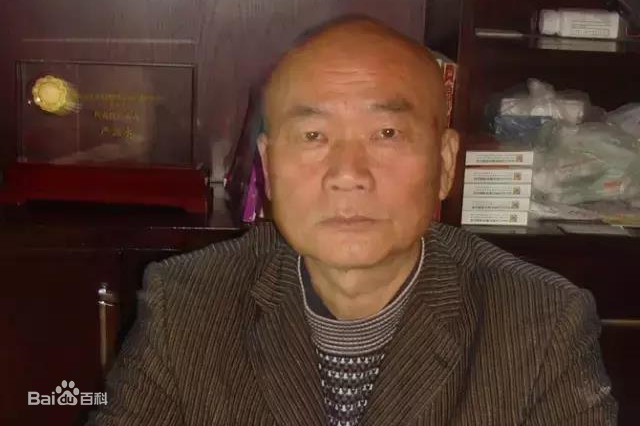
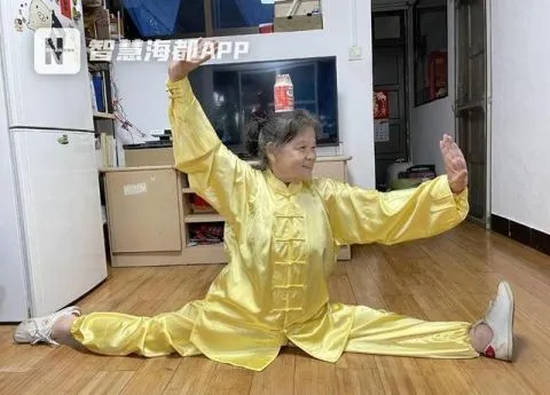
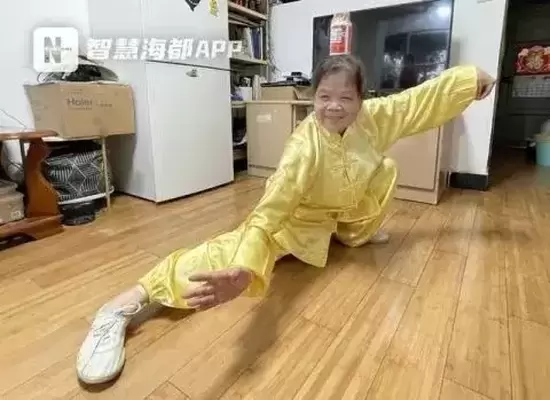
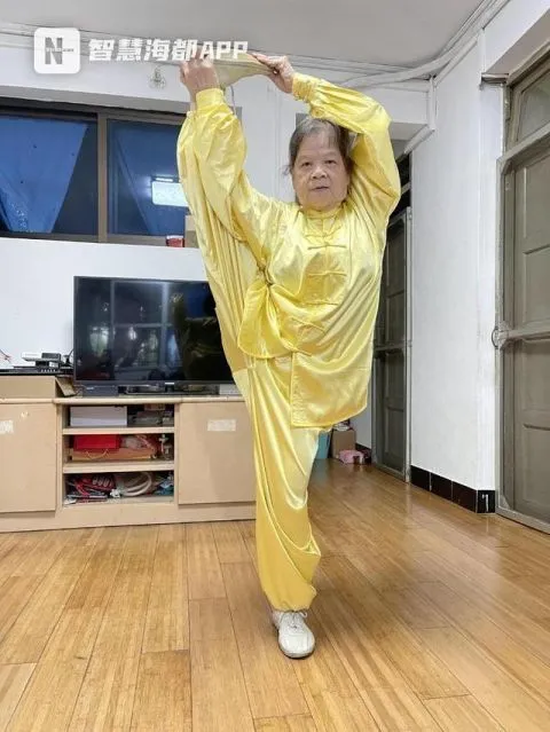
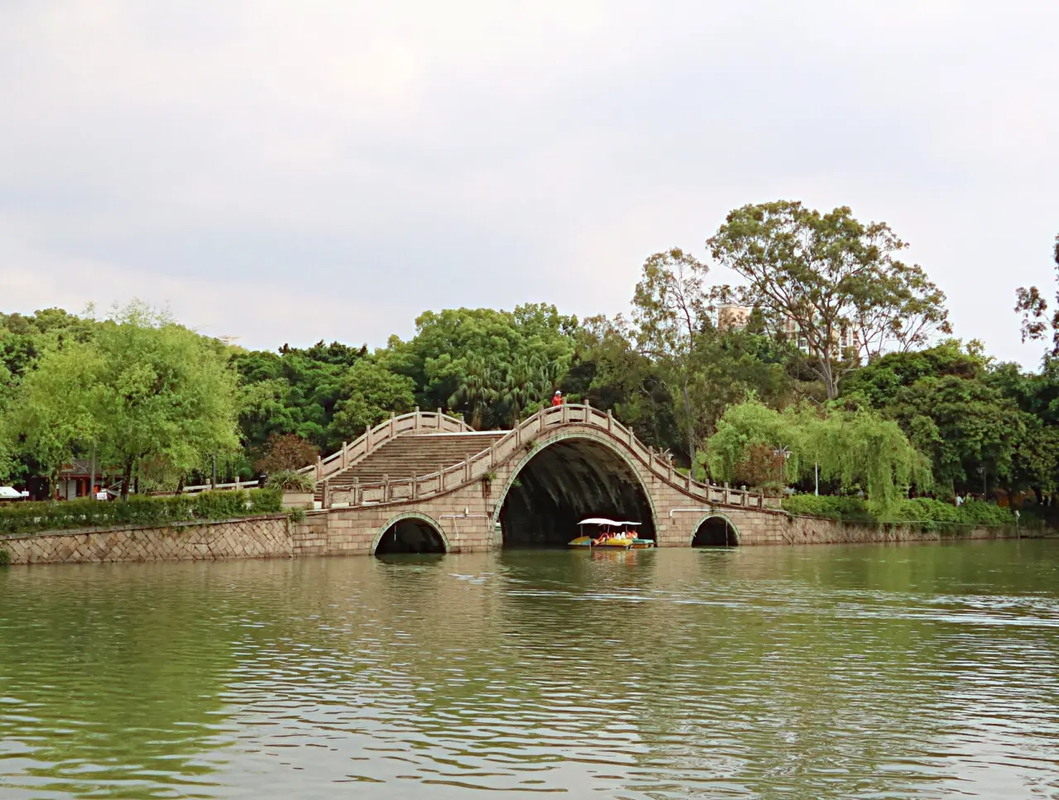
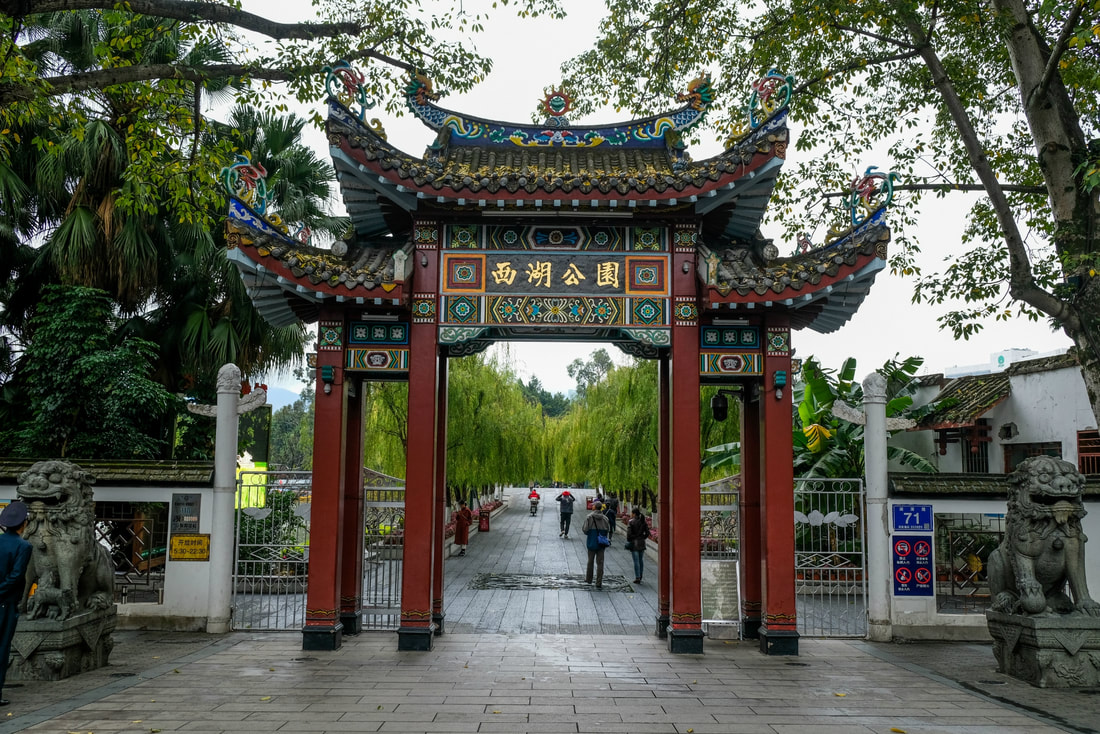
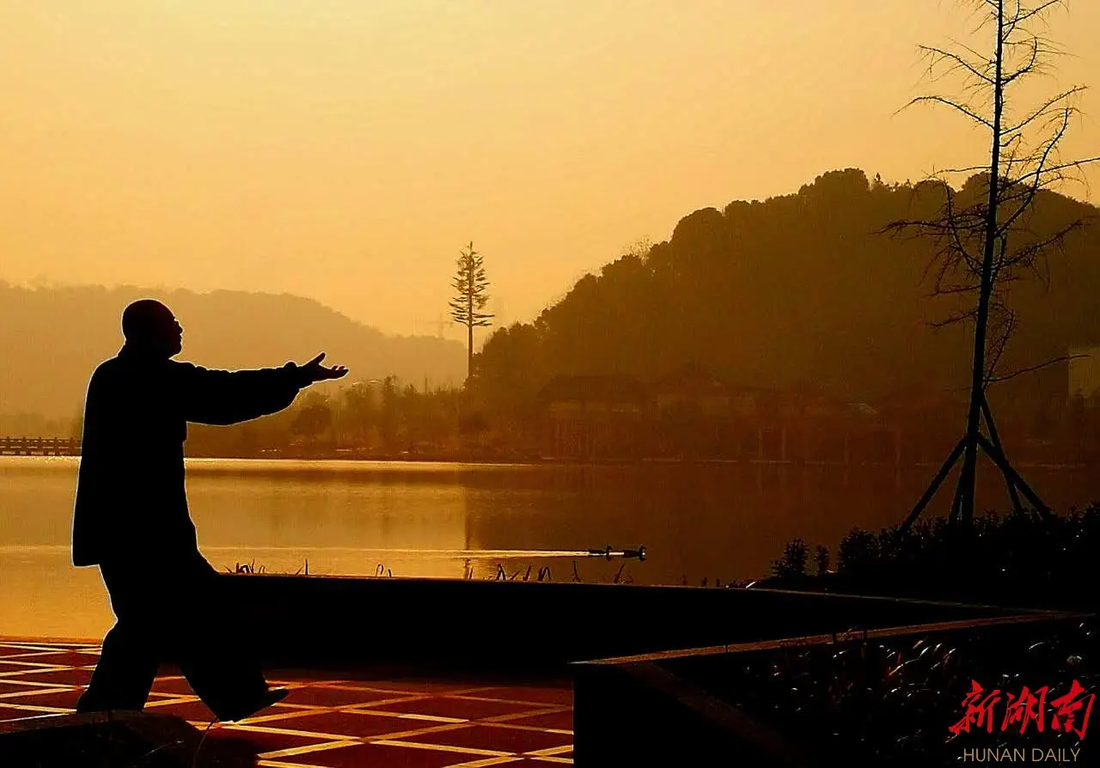
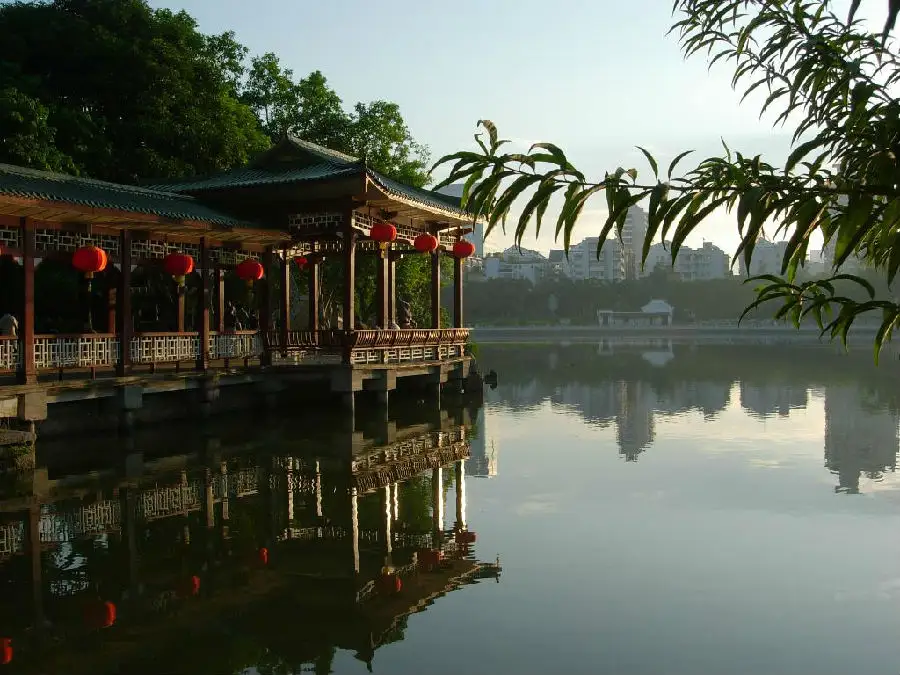
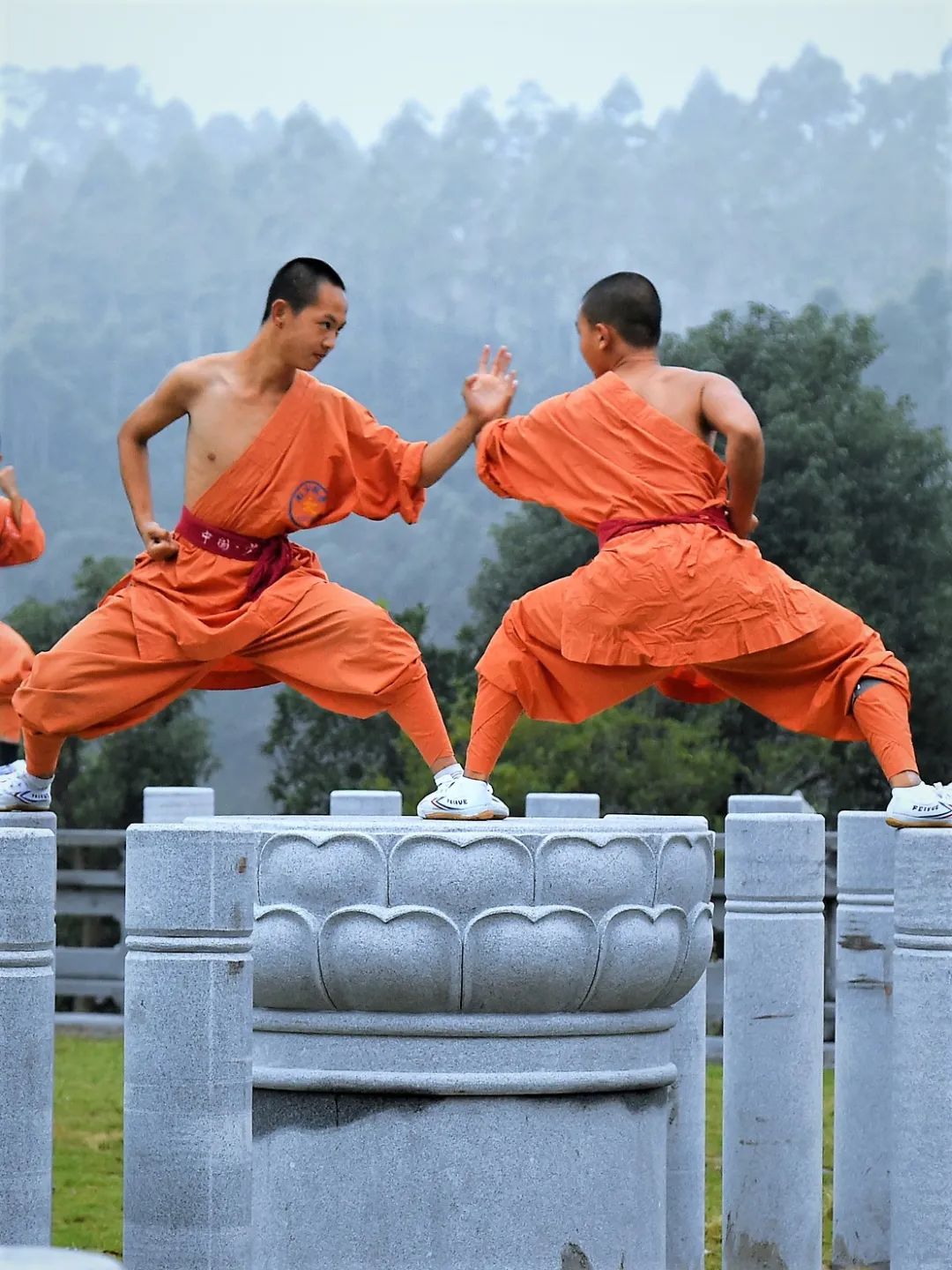
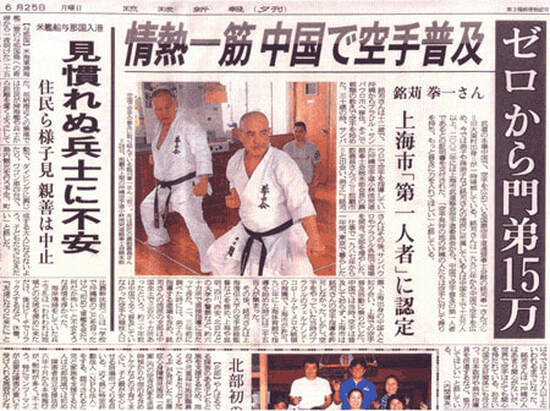
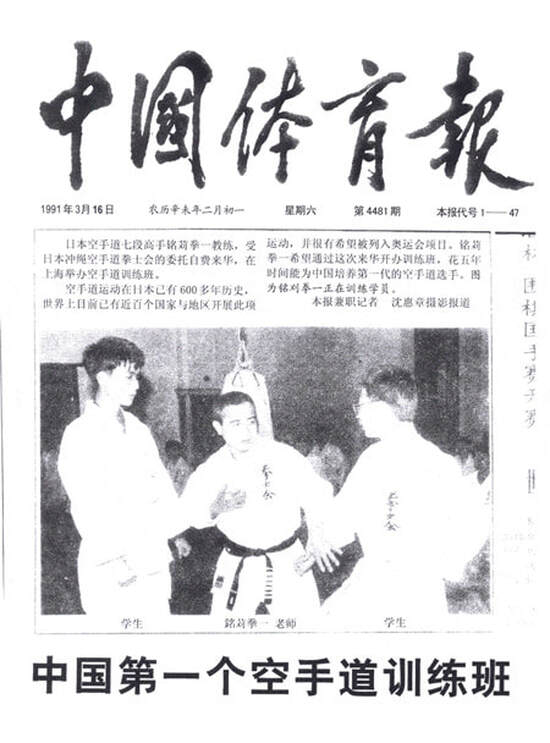
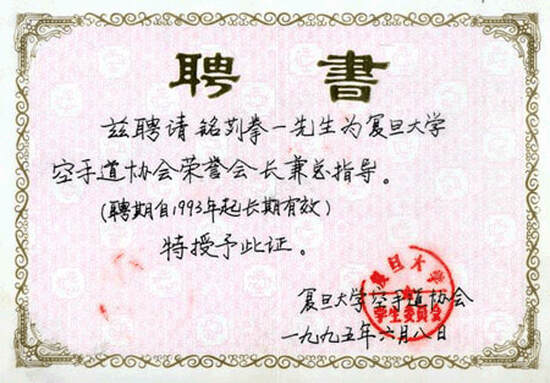
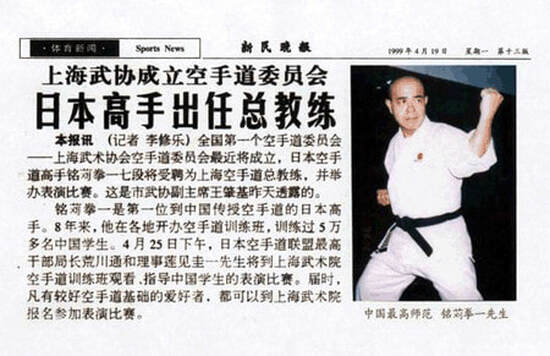
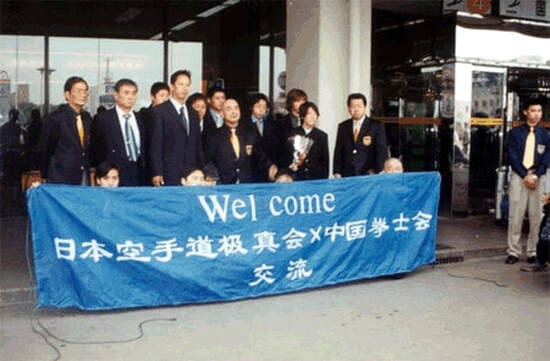
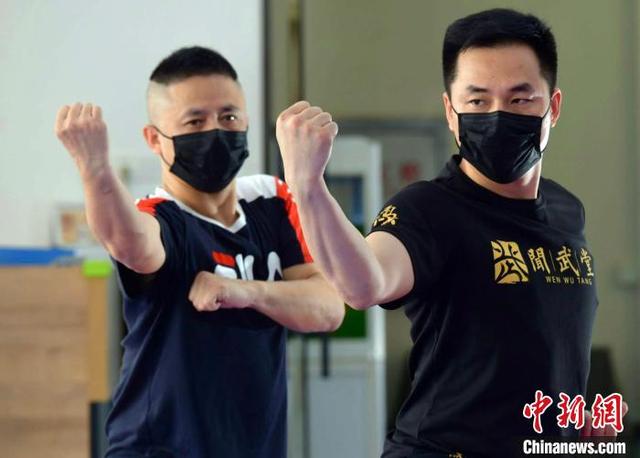
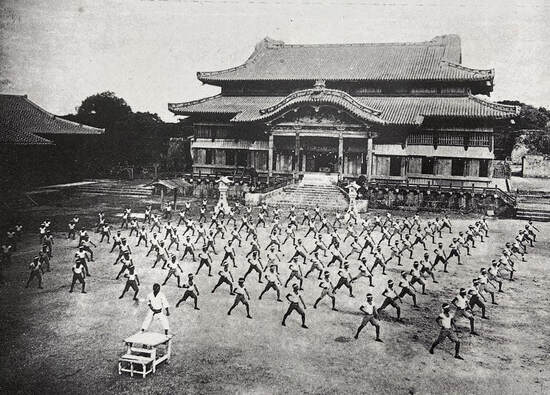
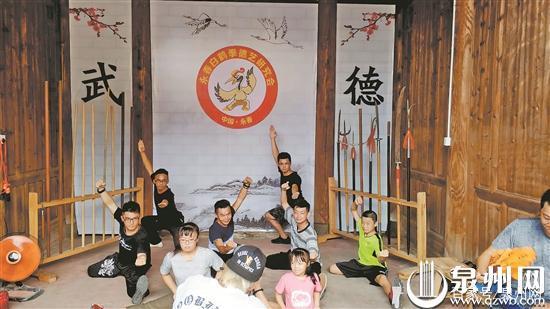
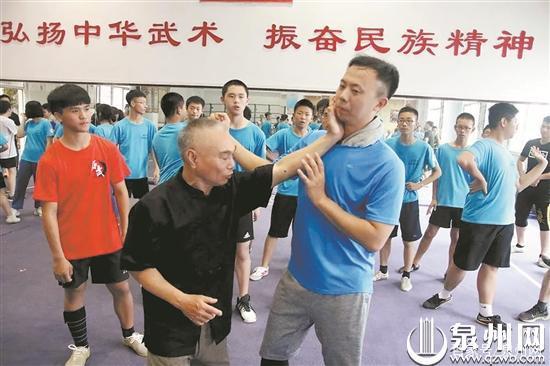
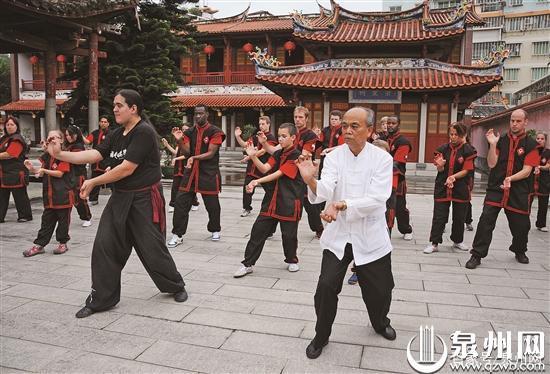
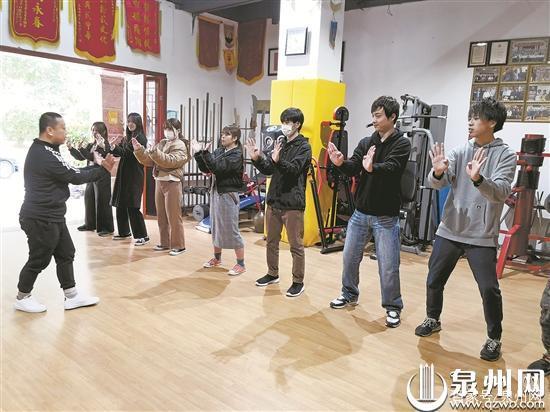
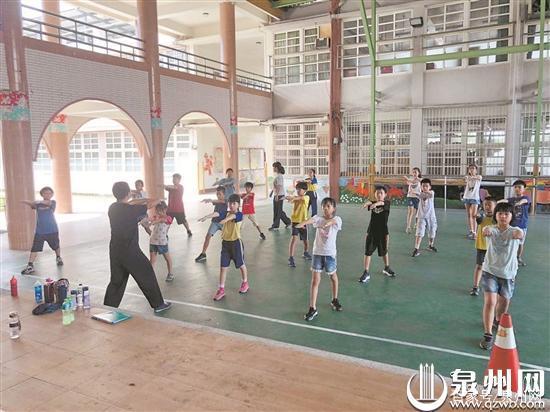
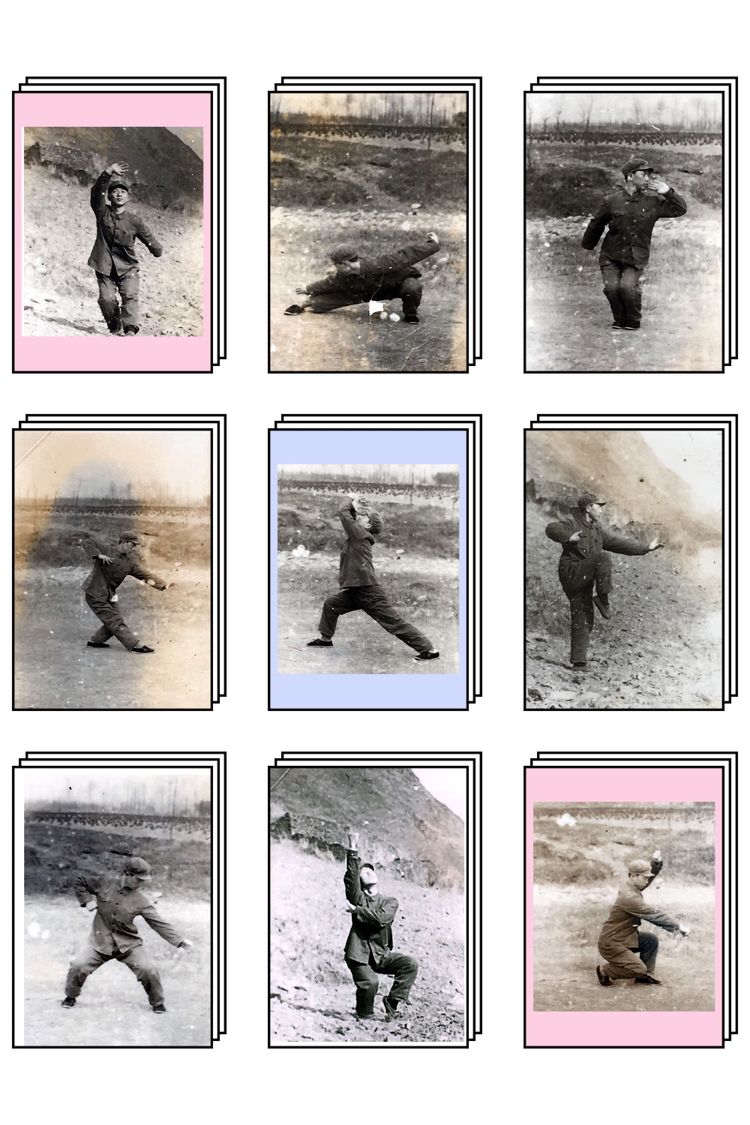

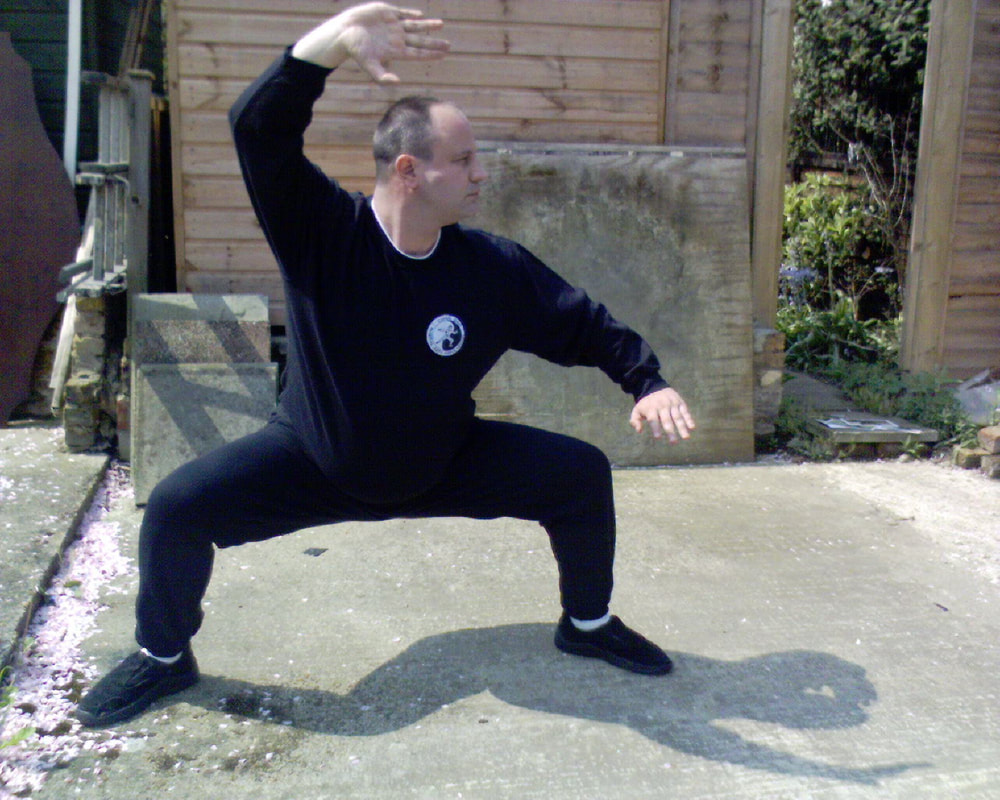
 RSS Feed
RSS Feed